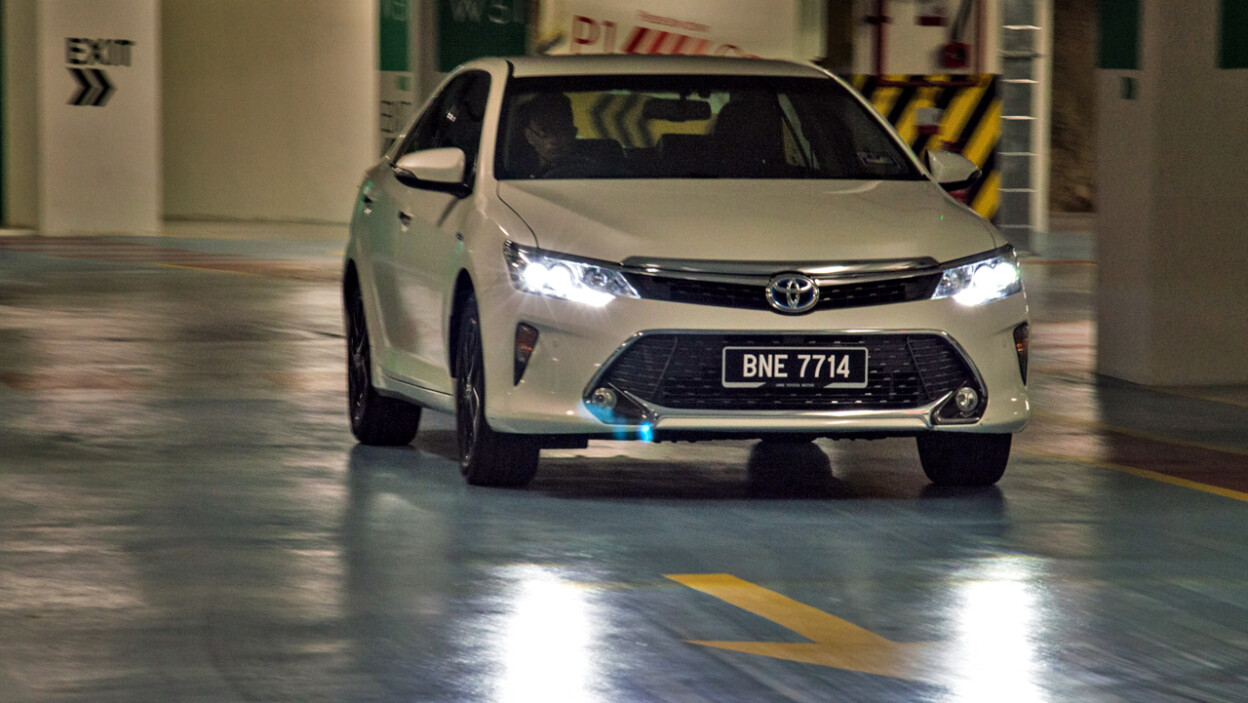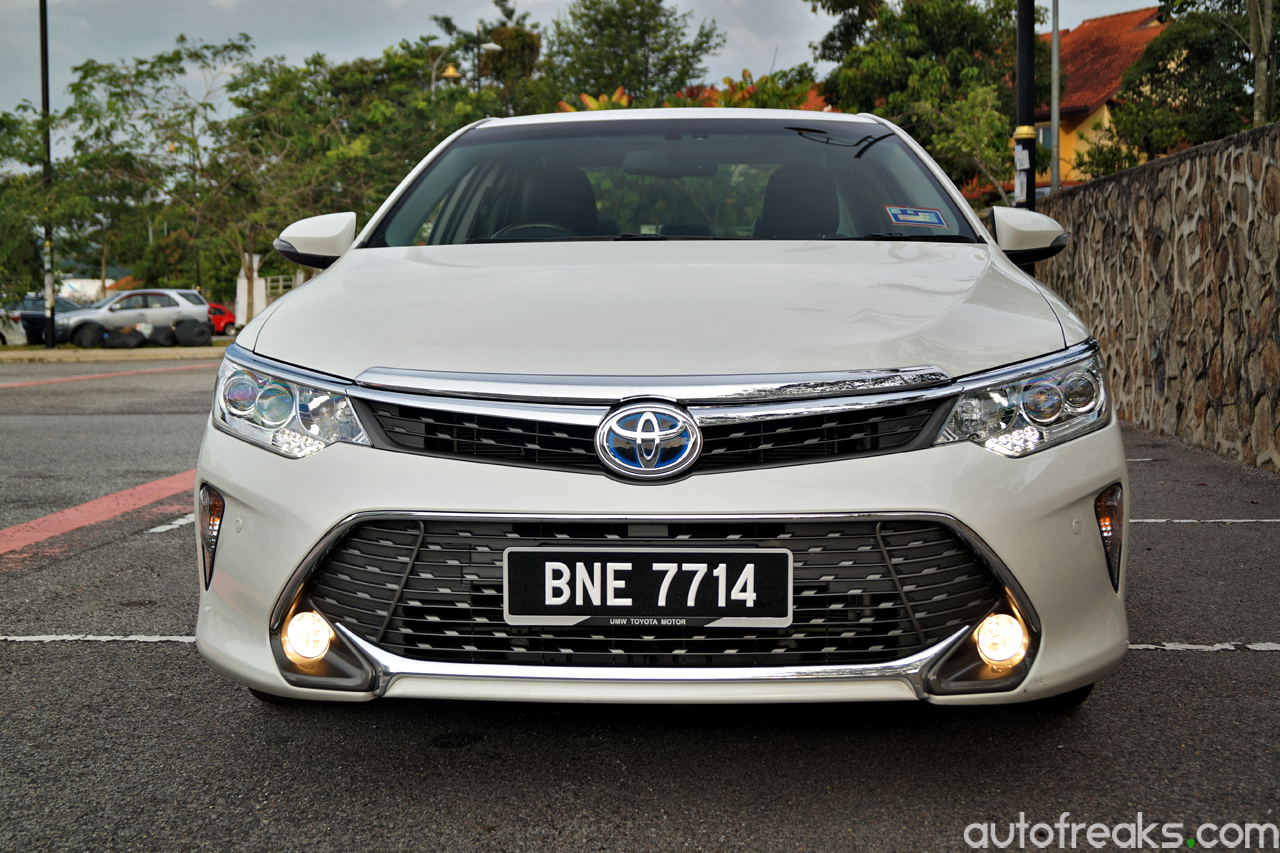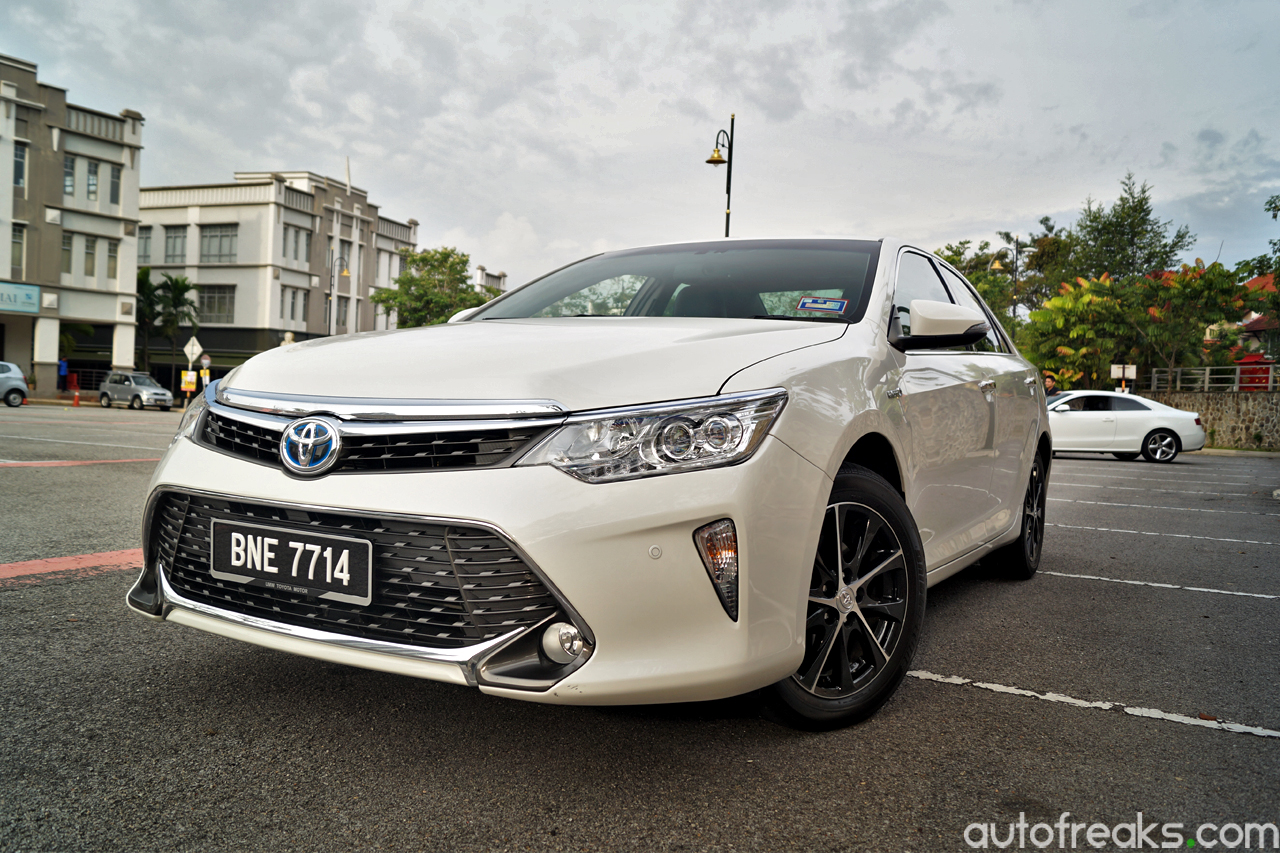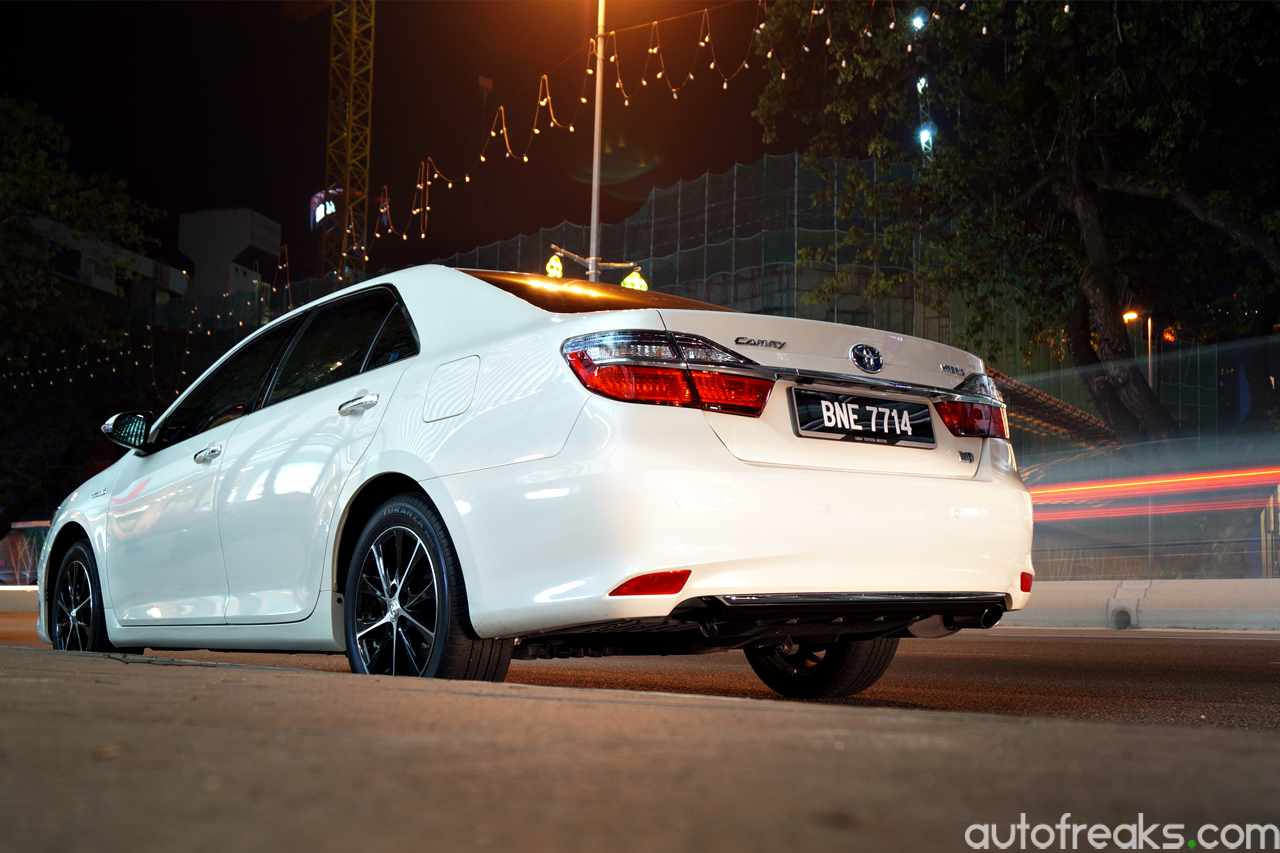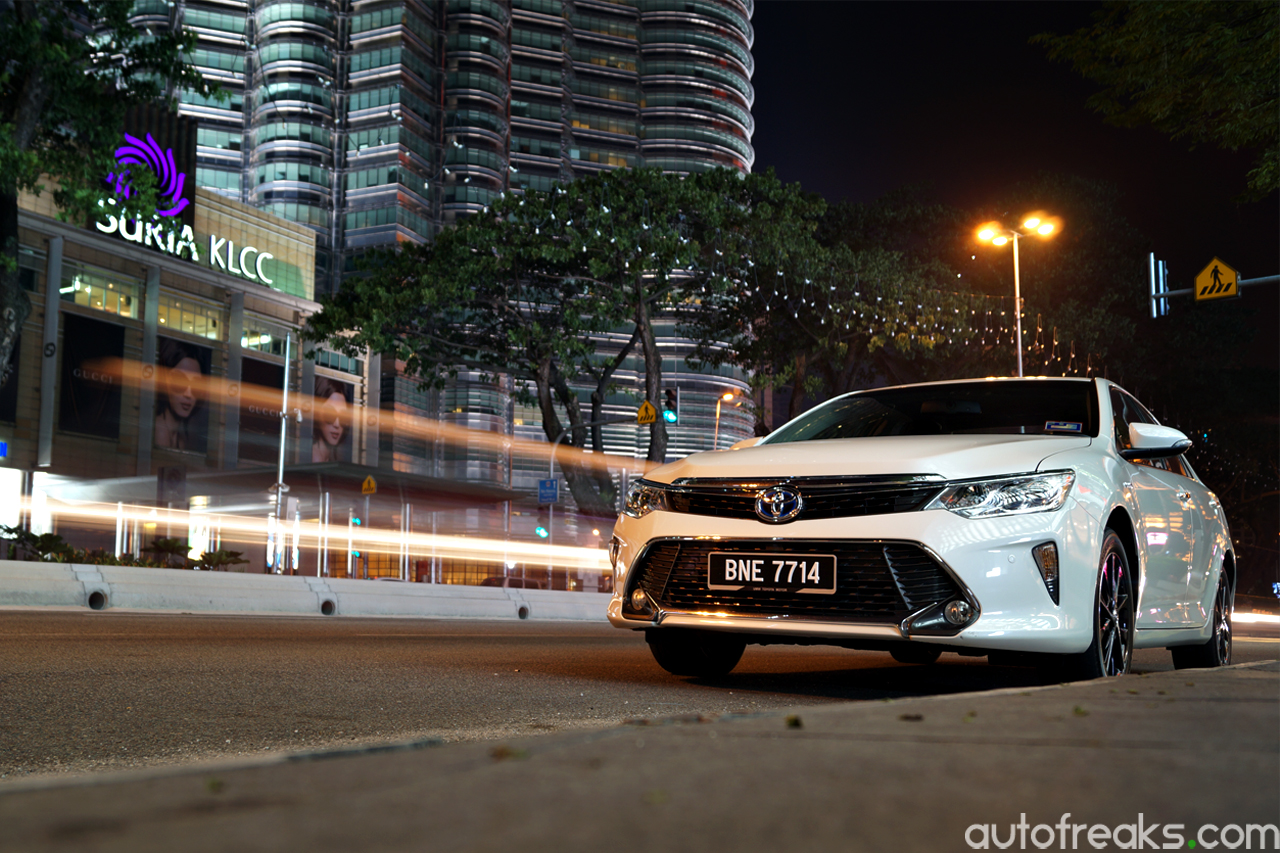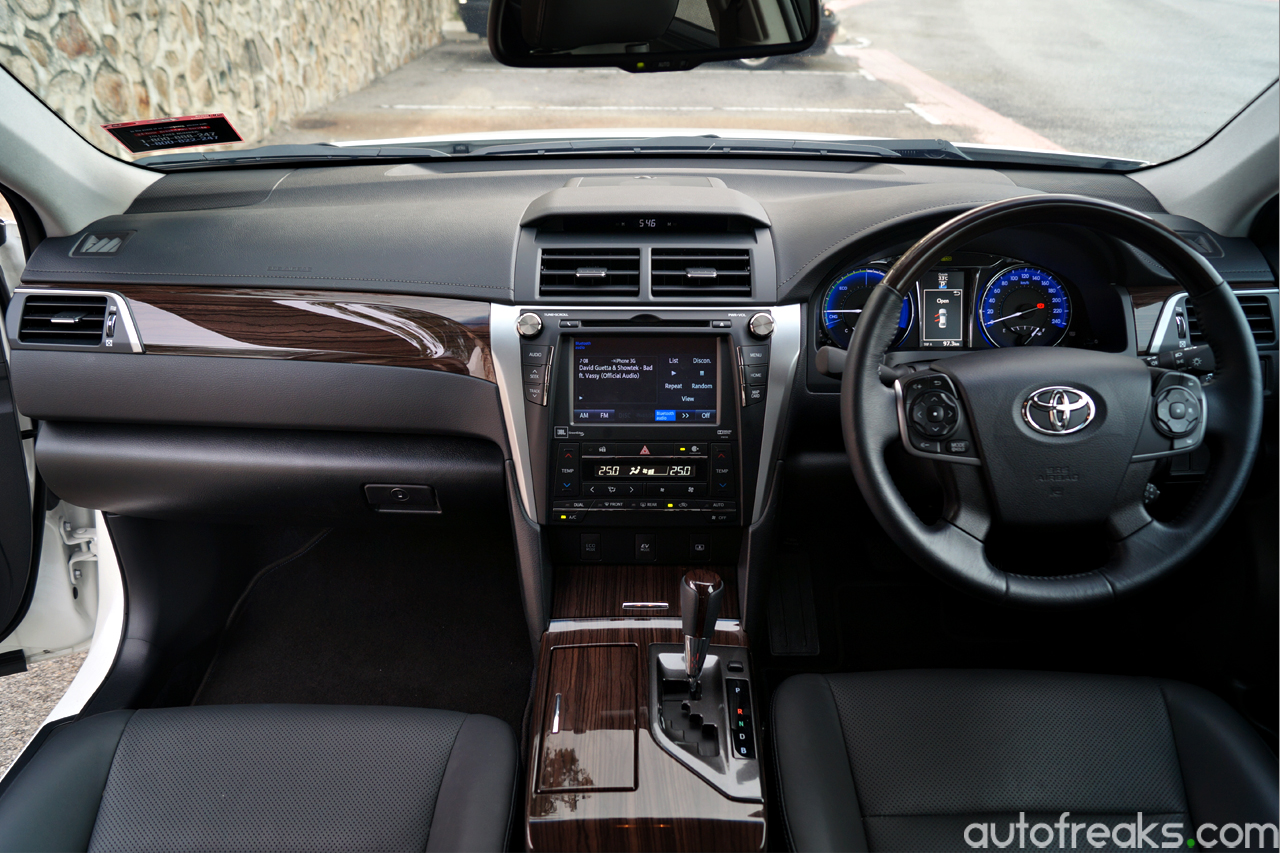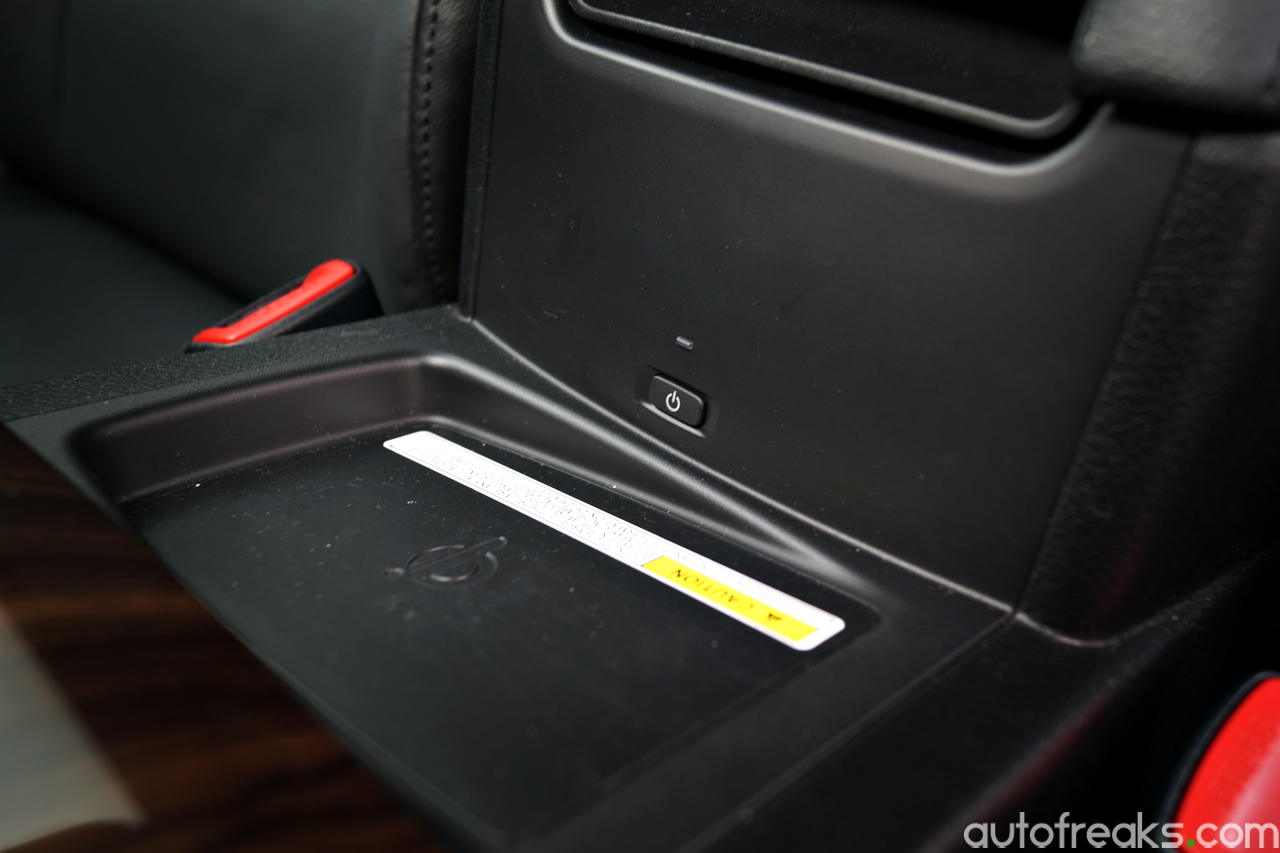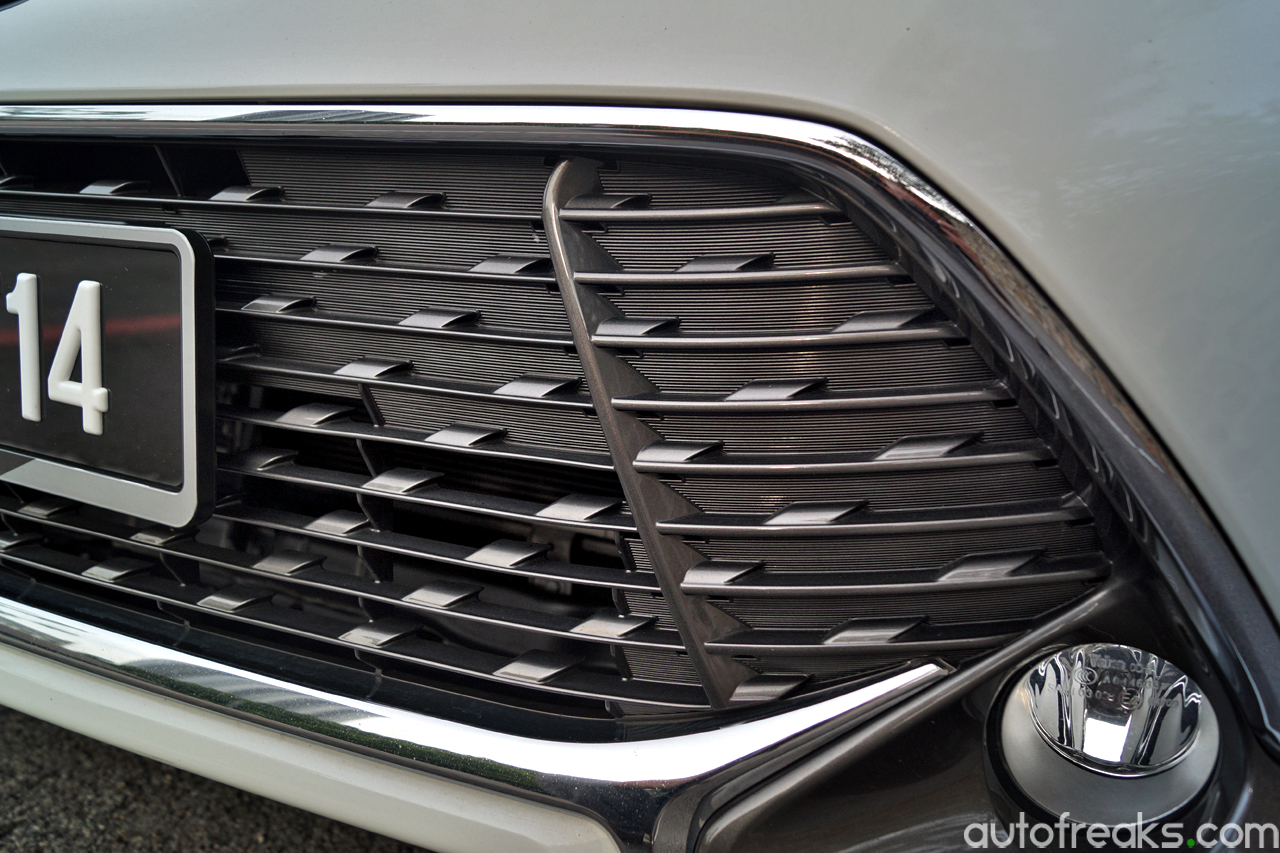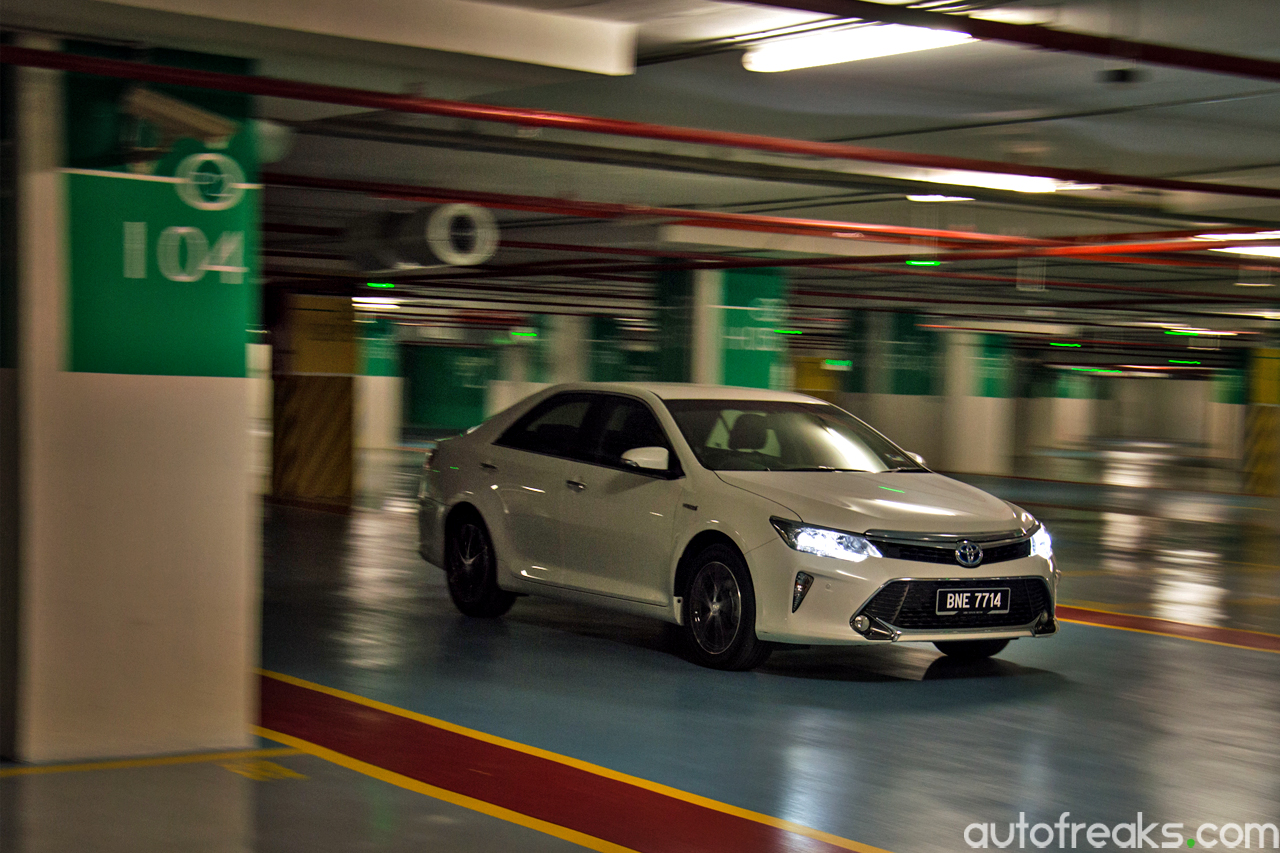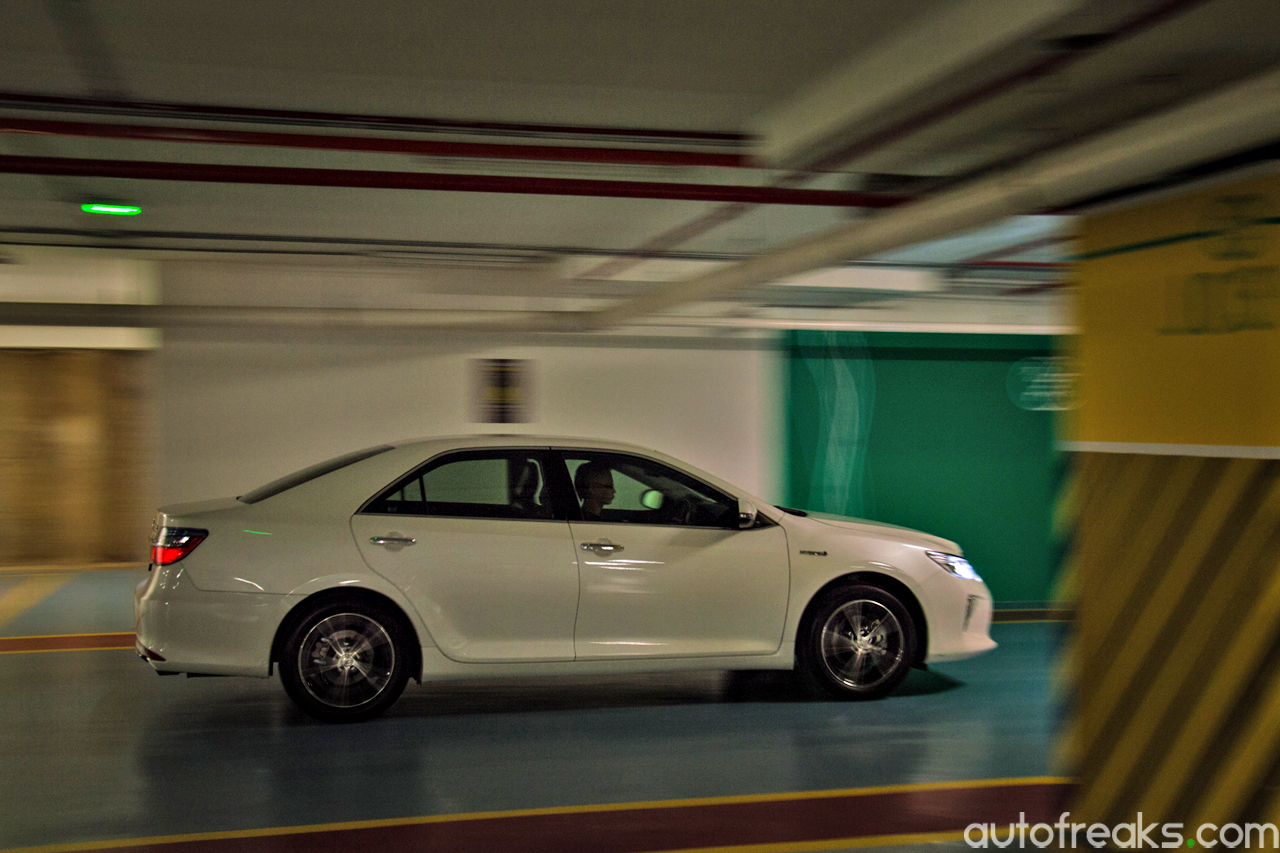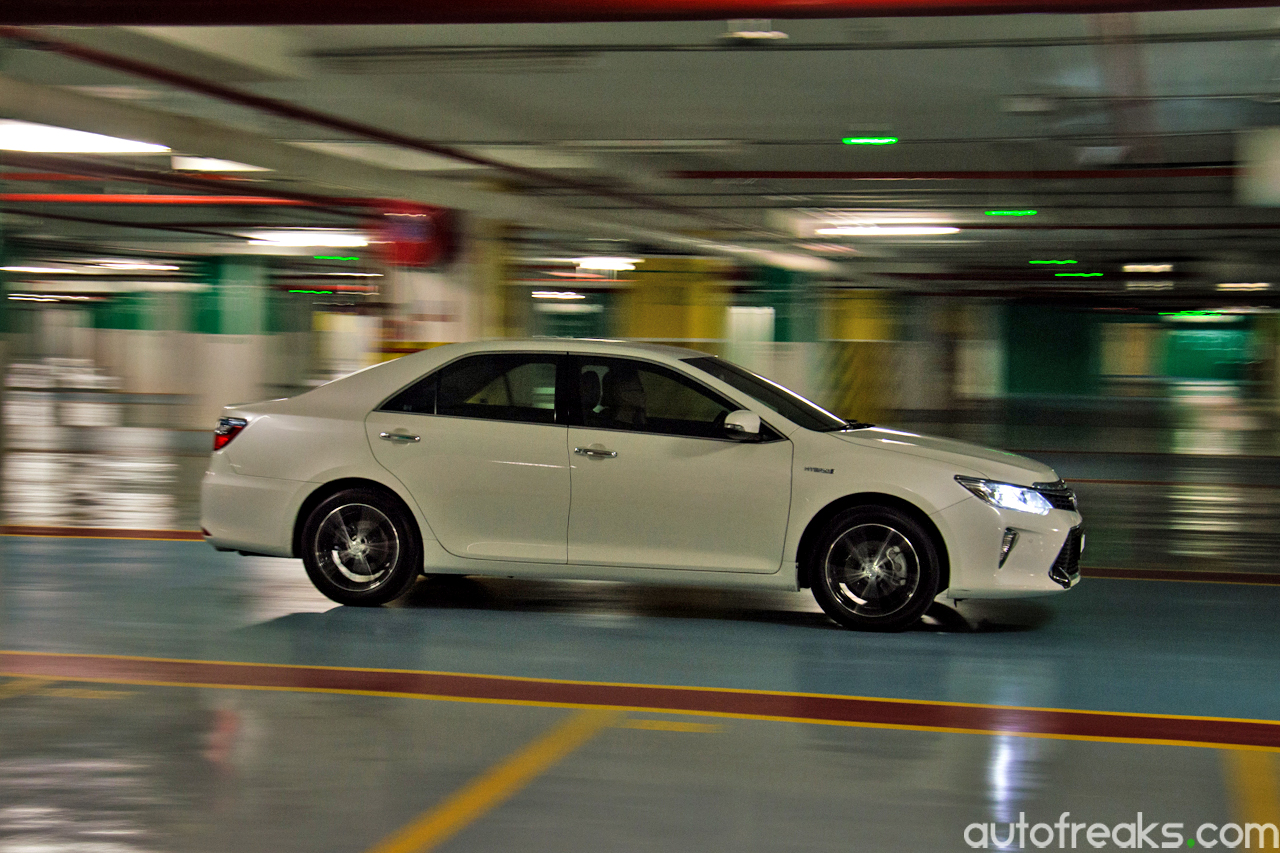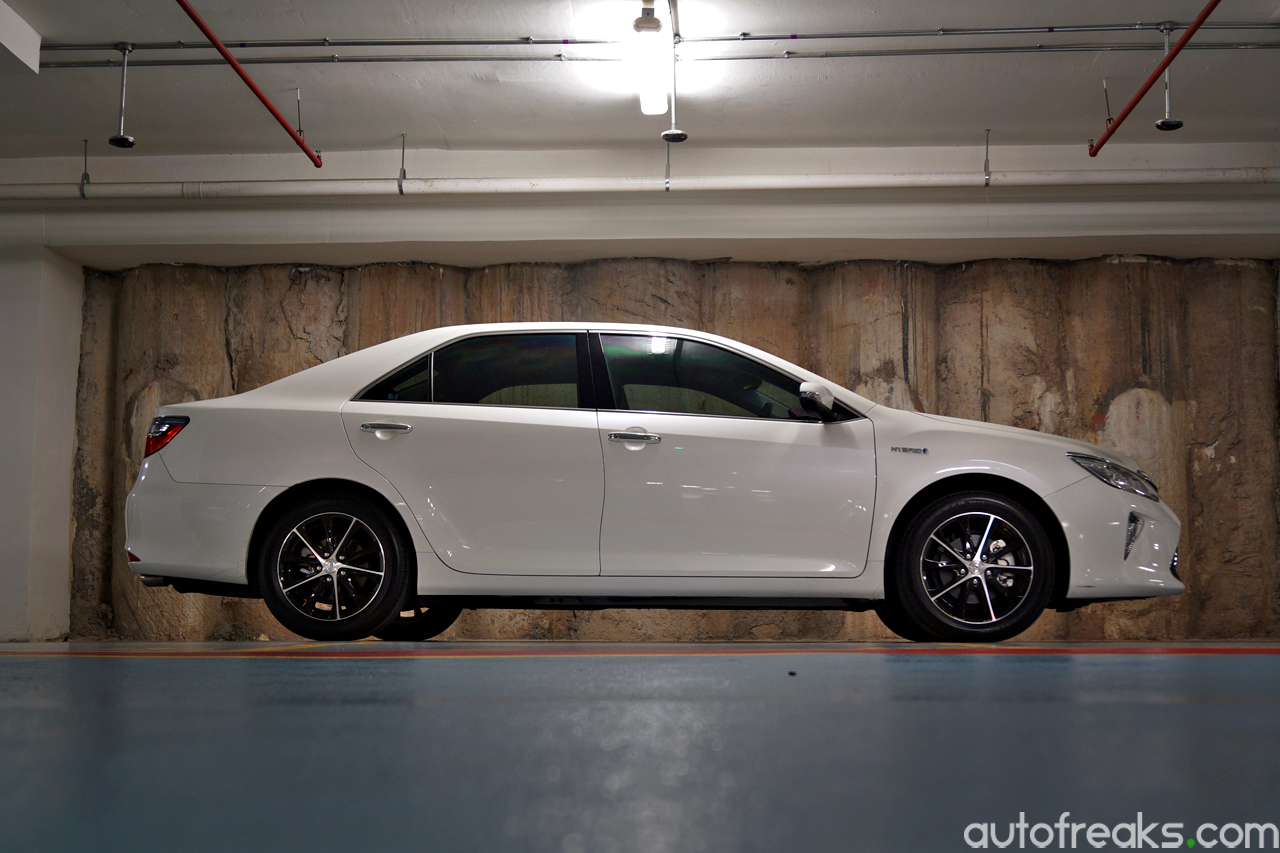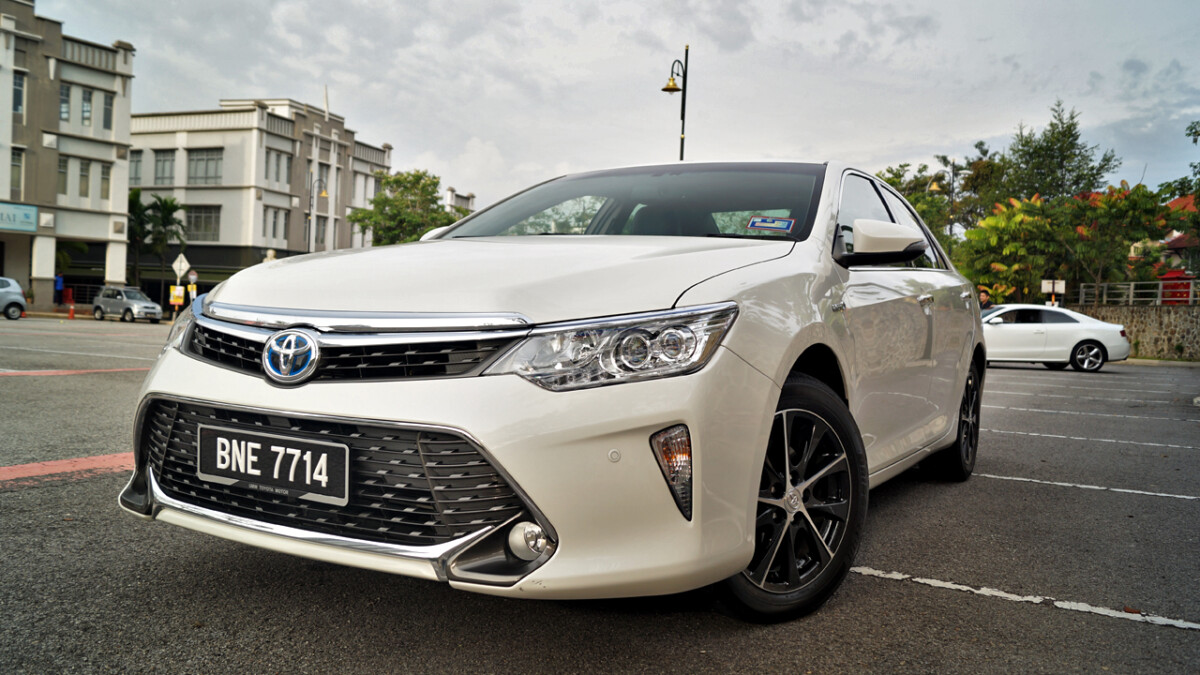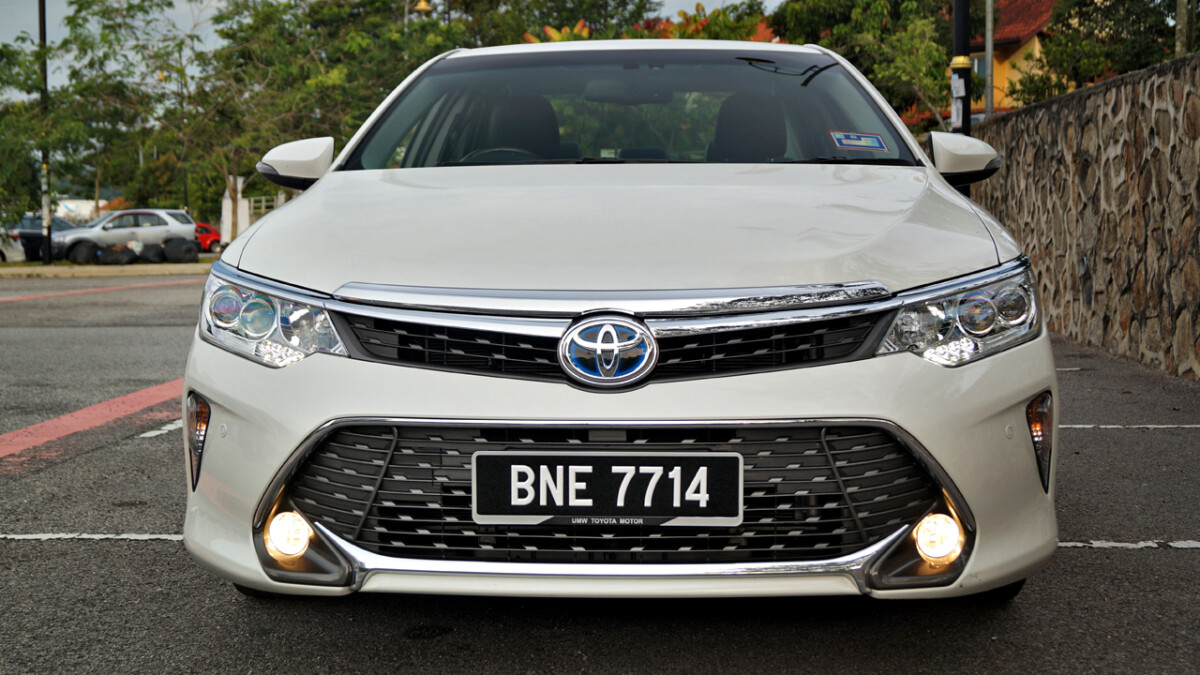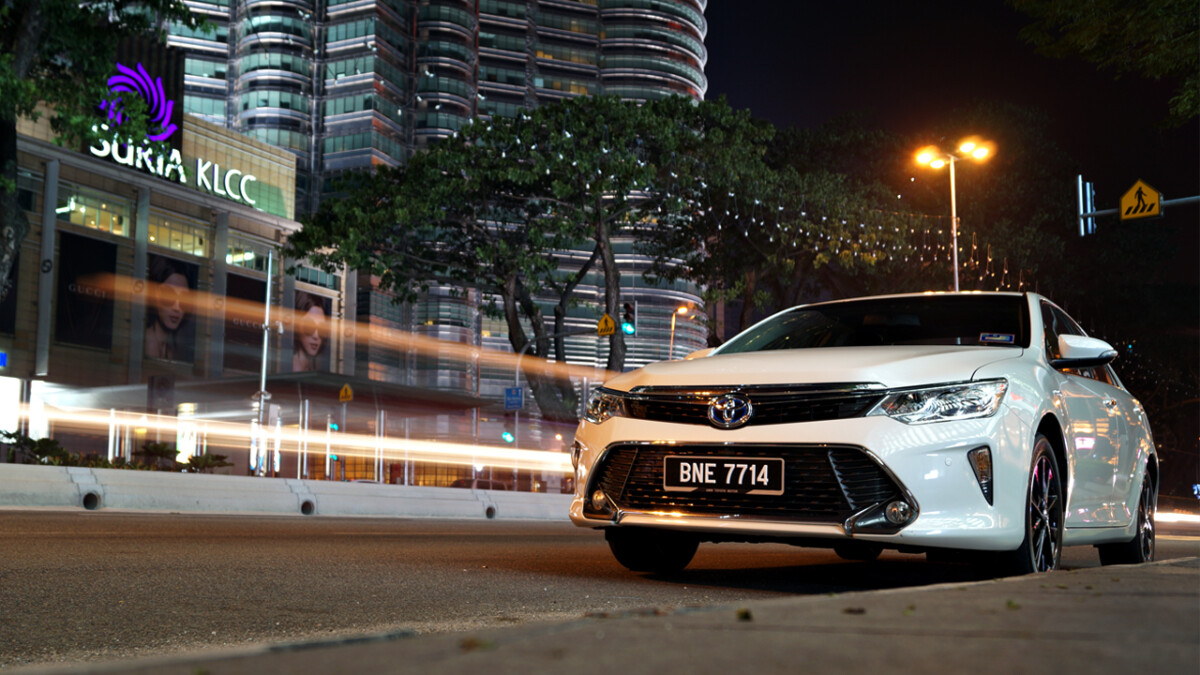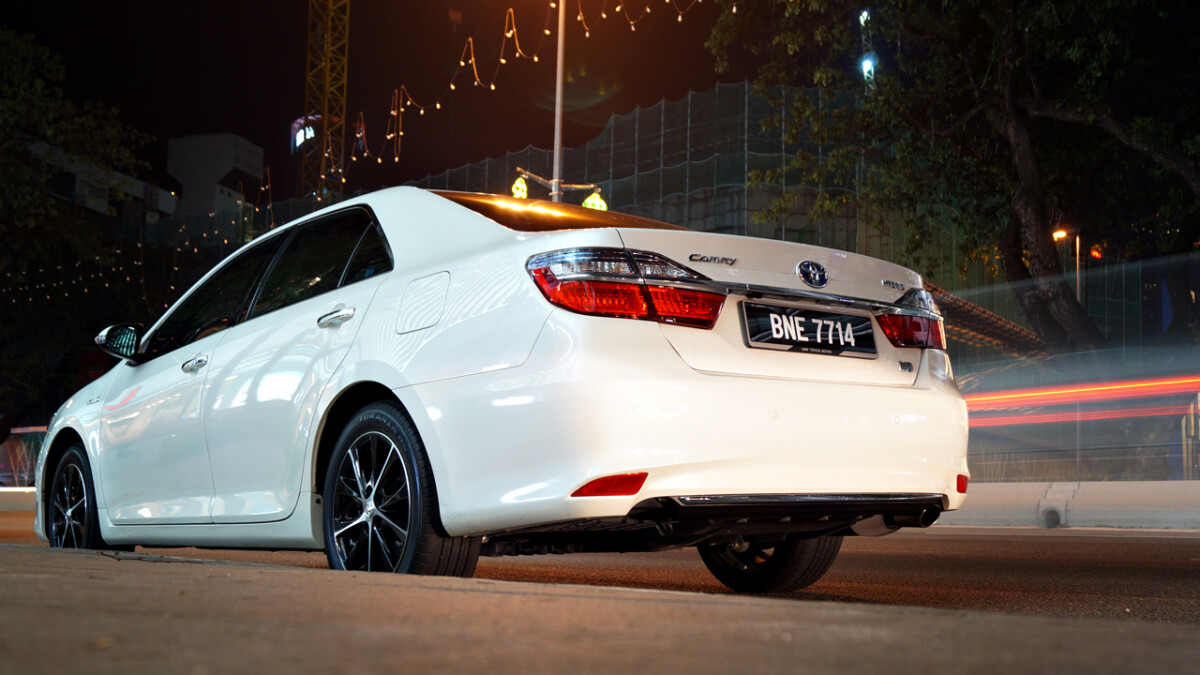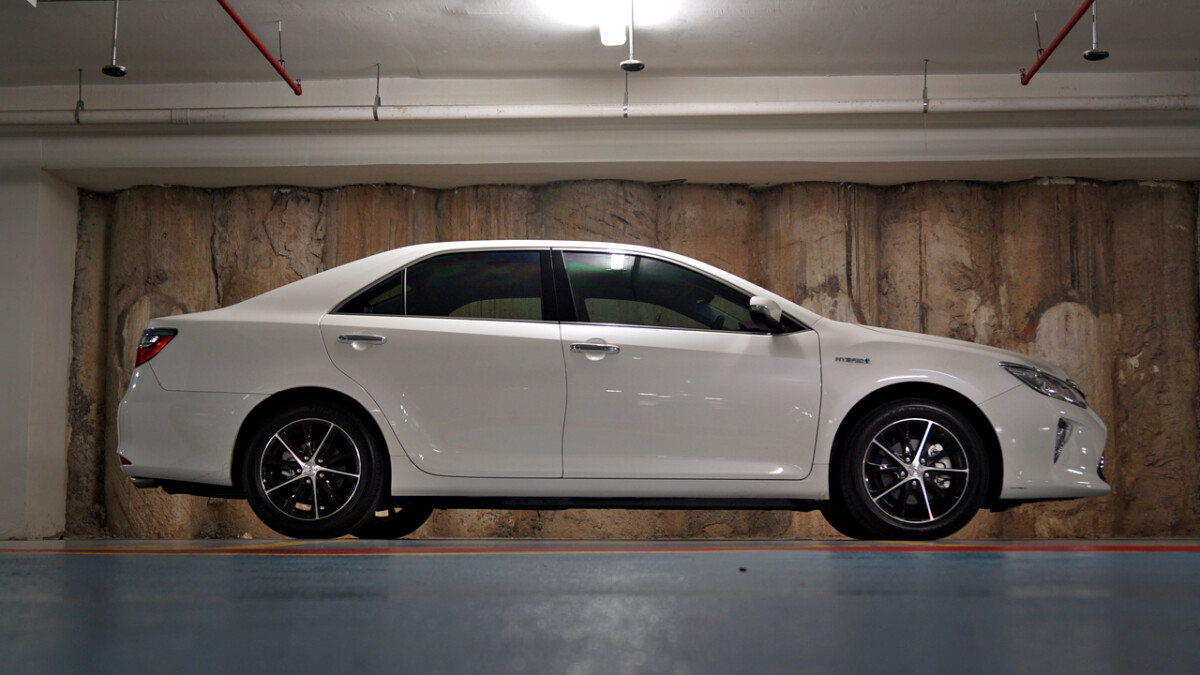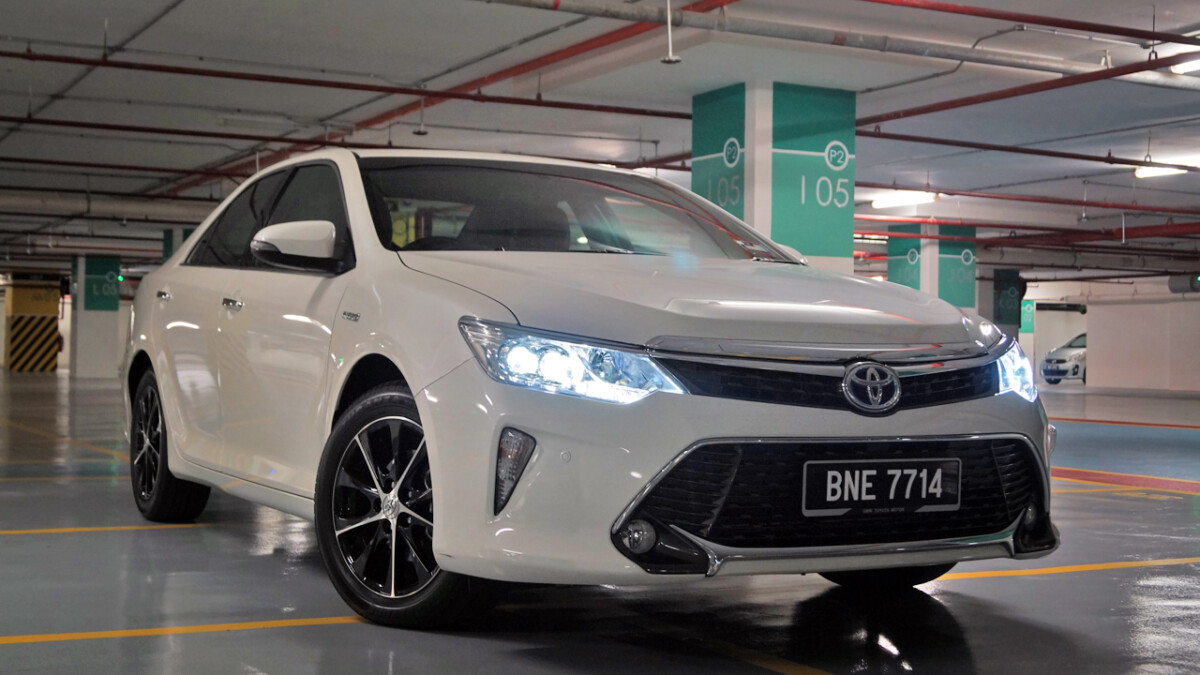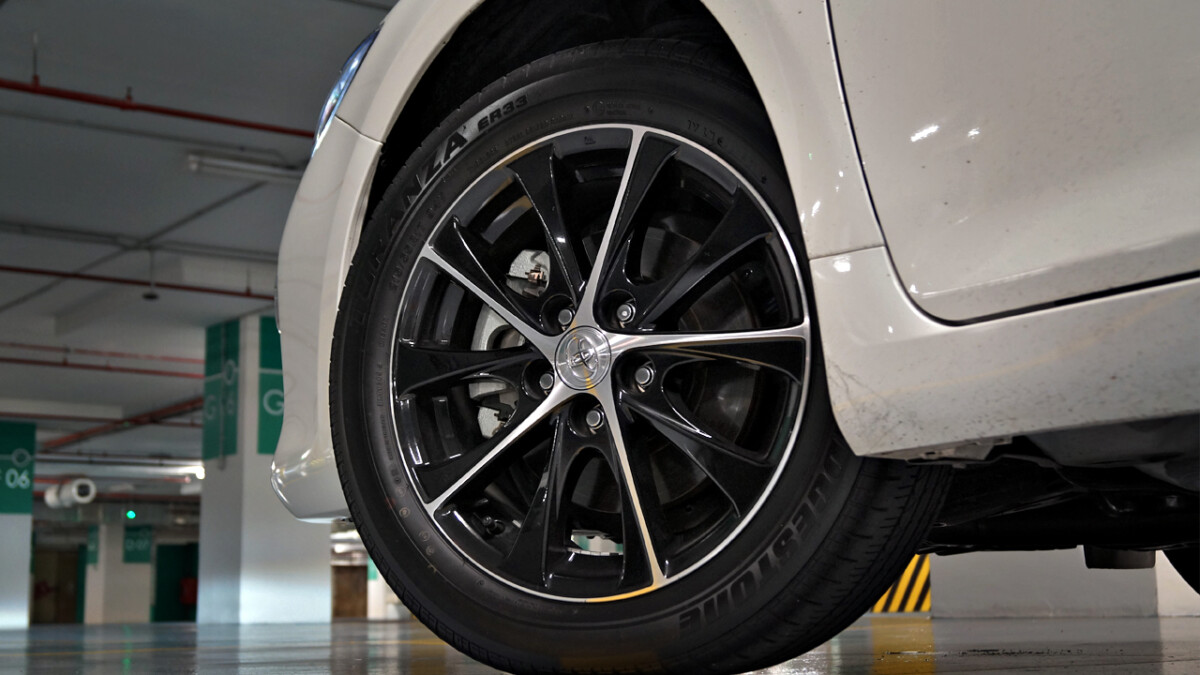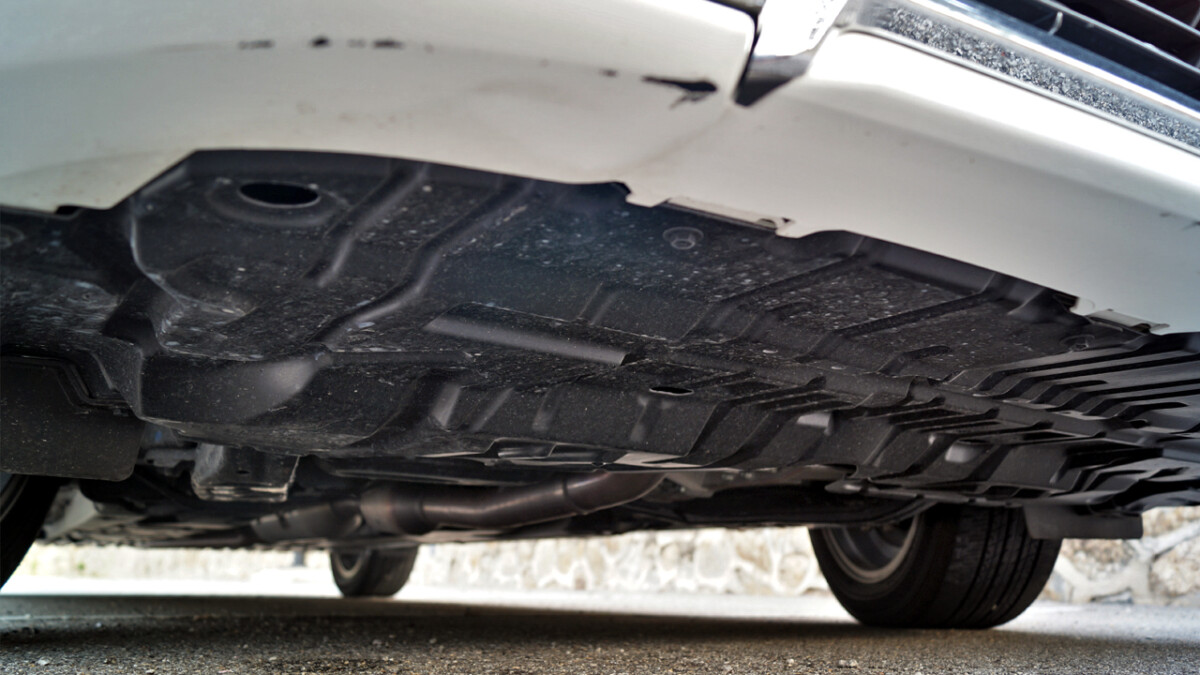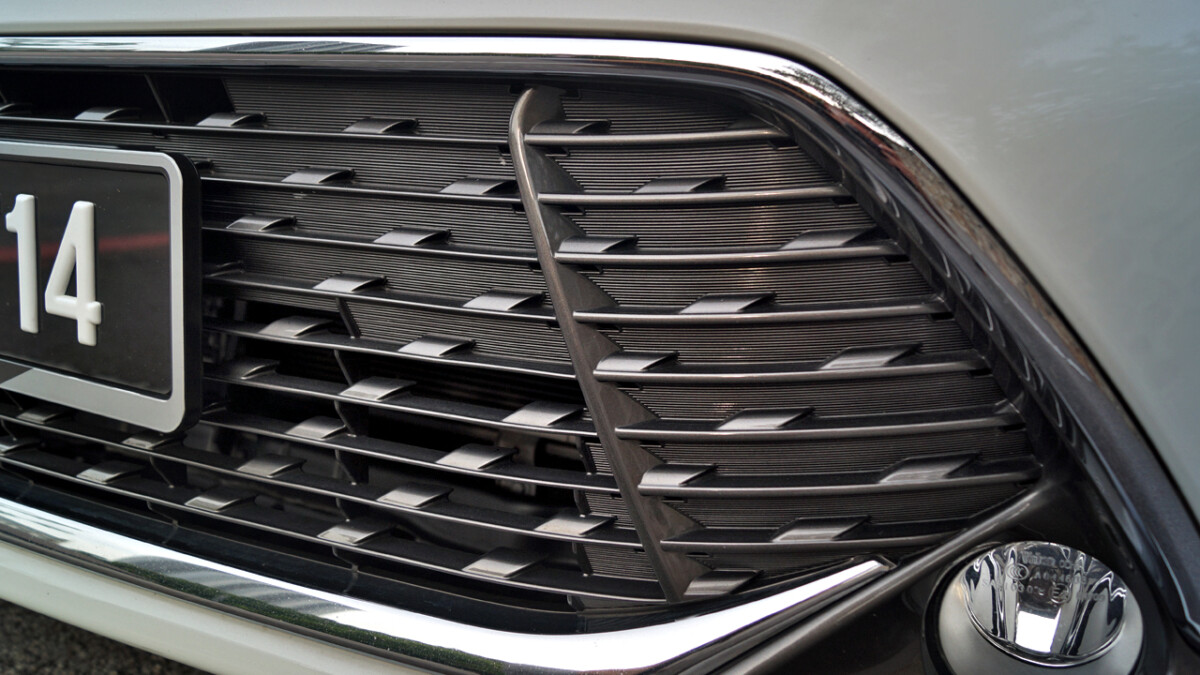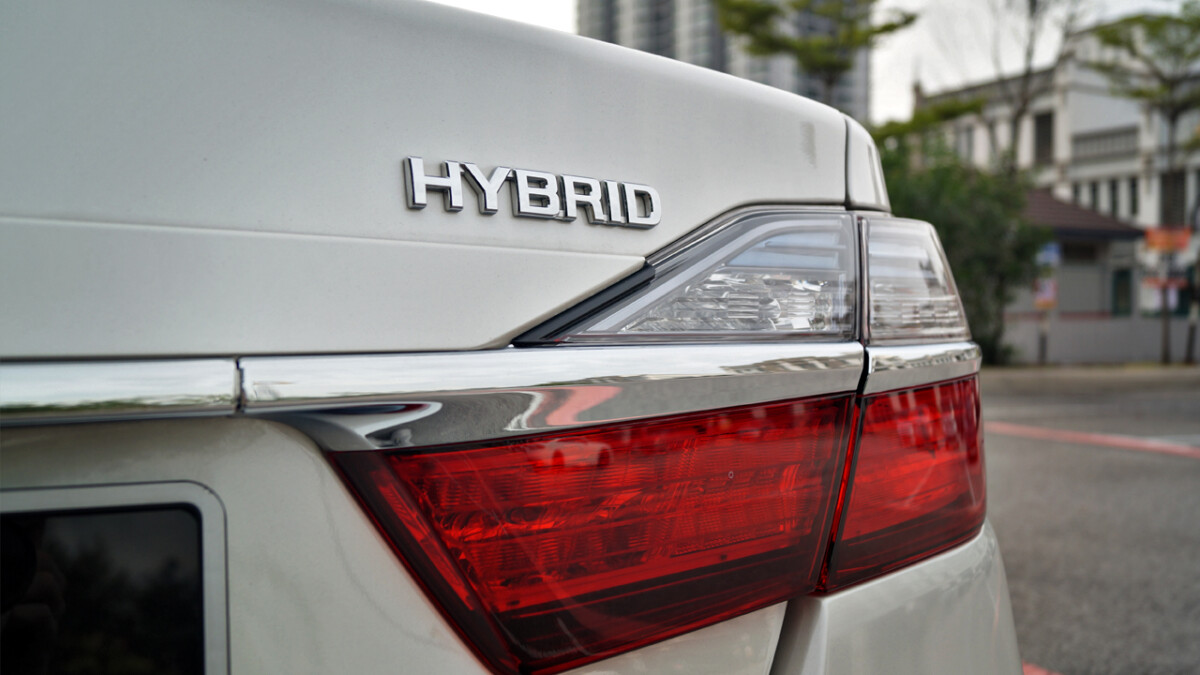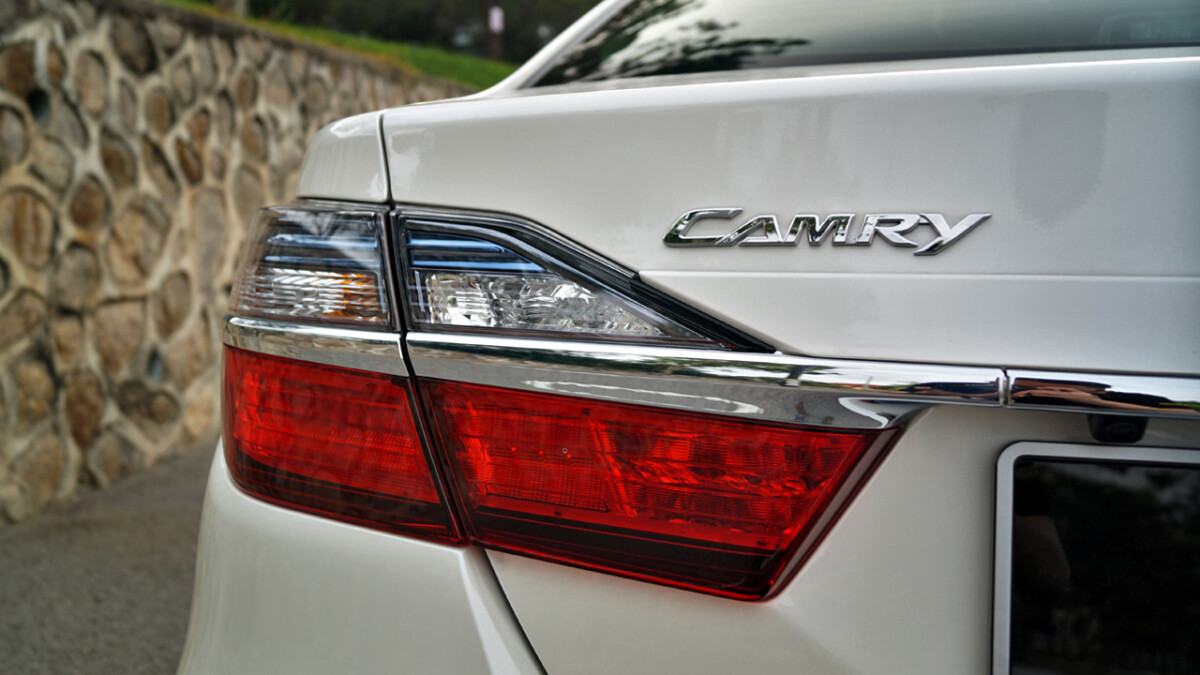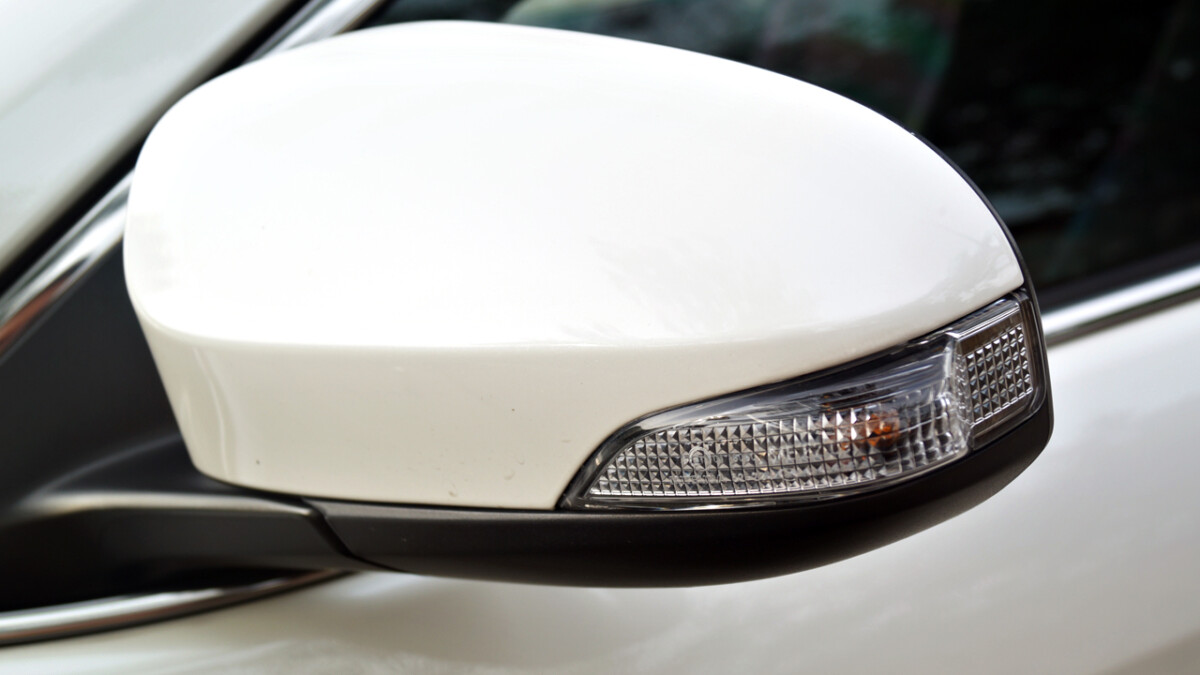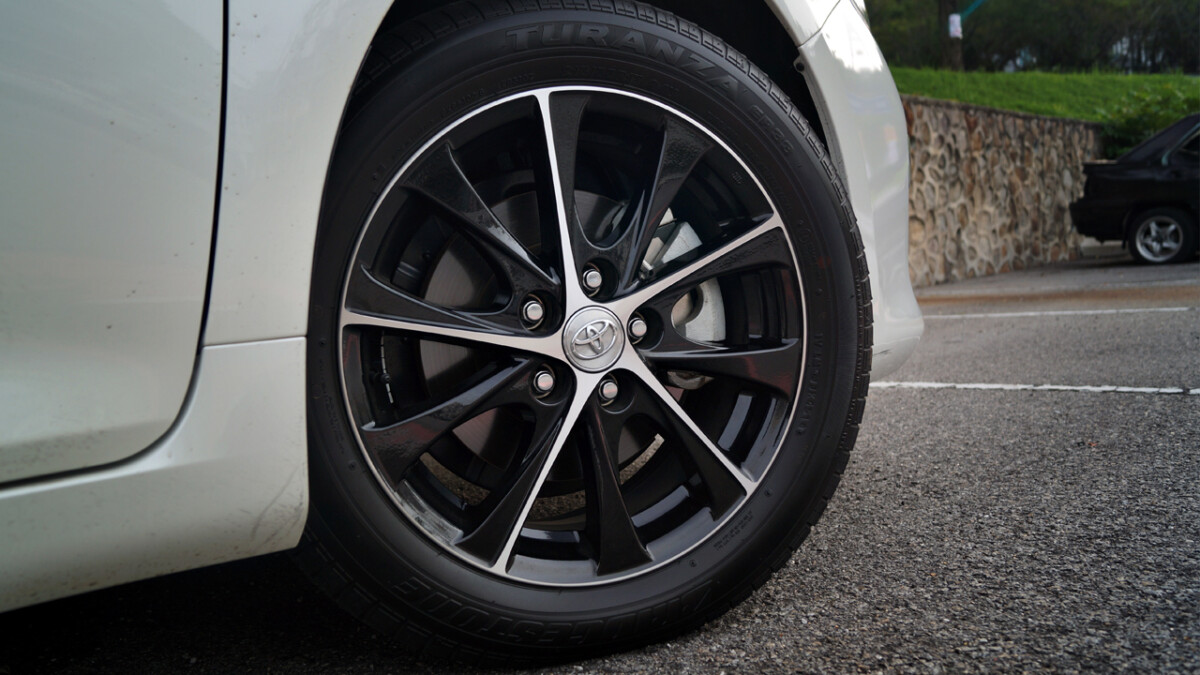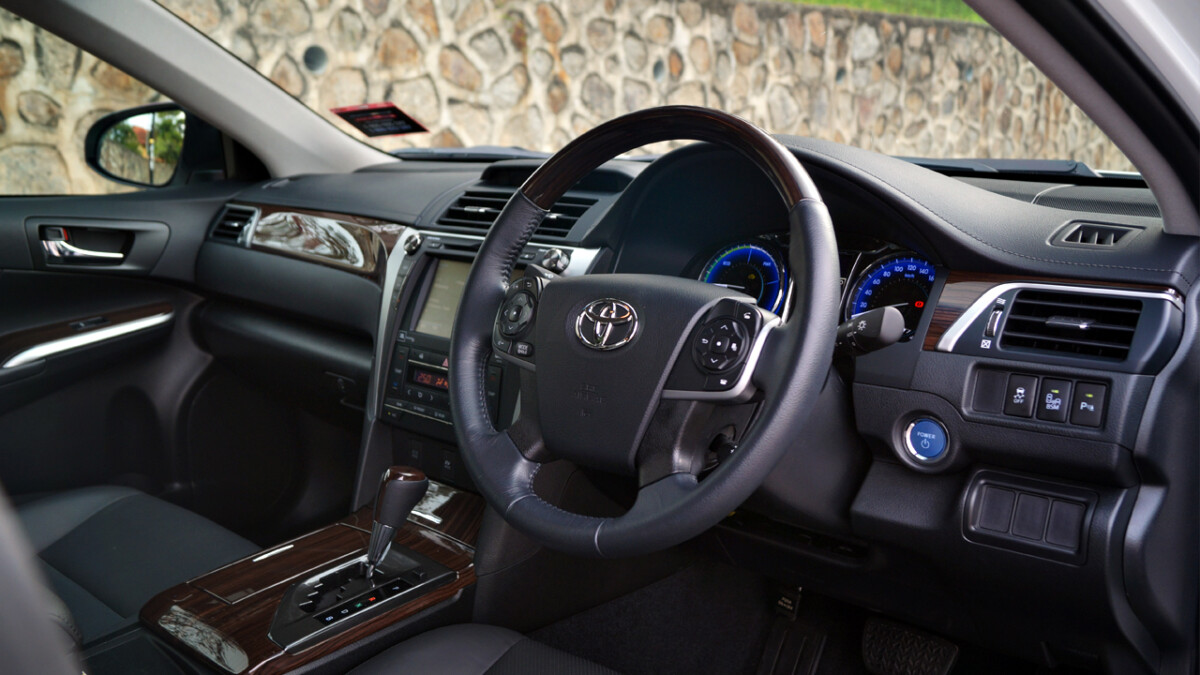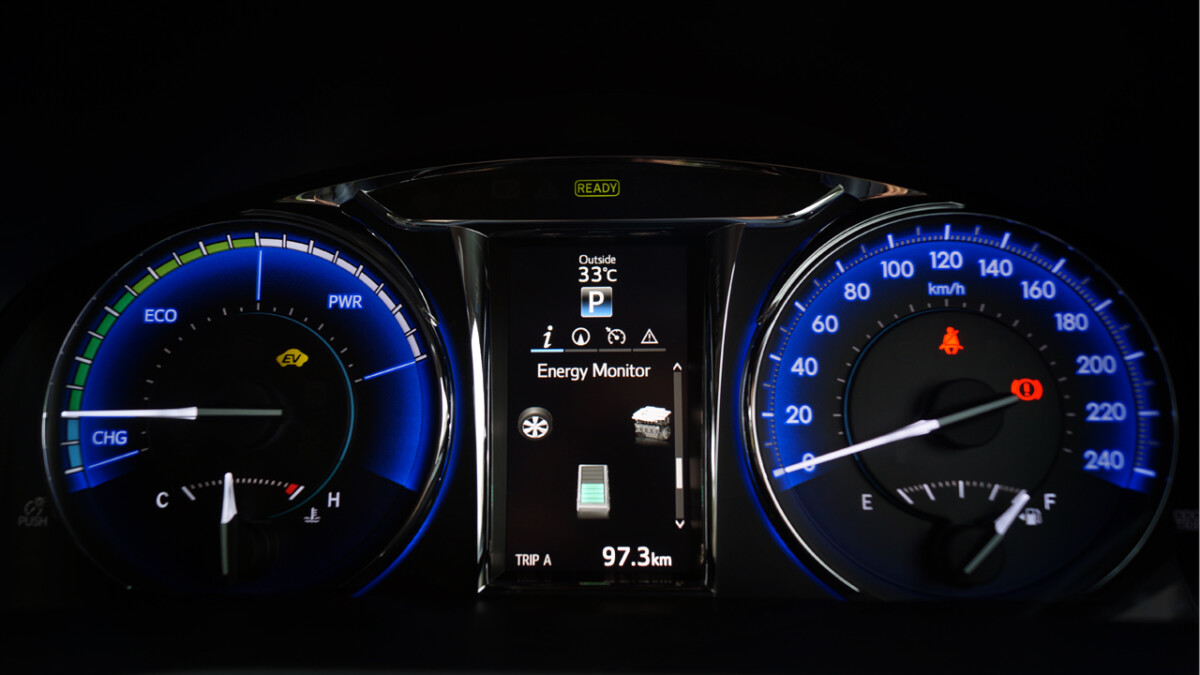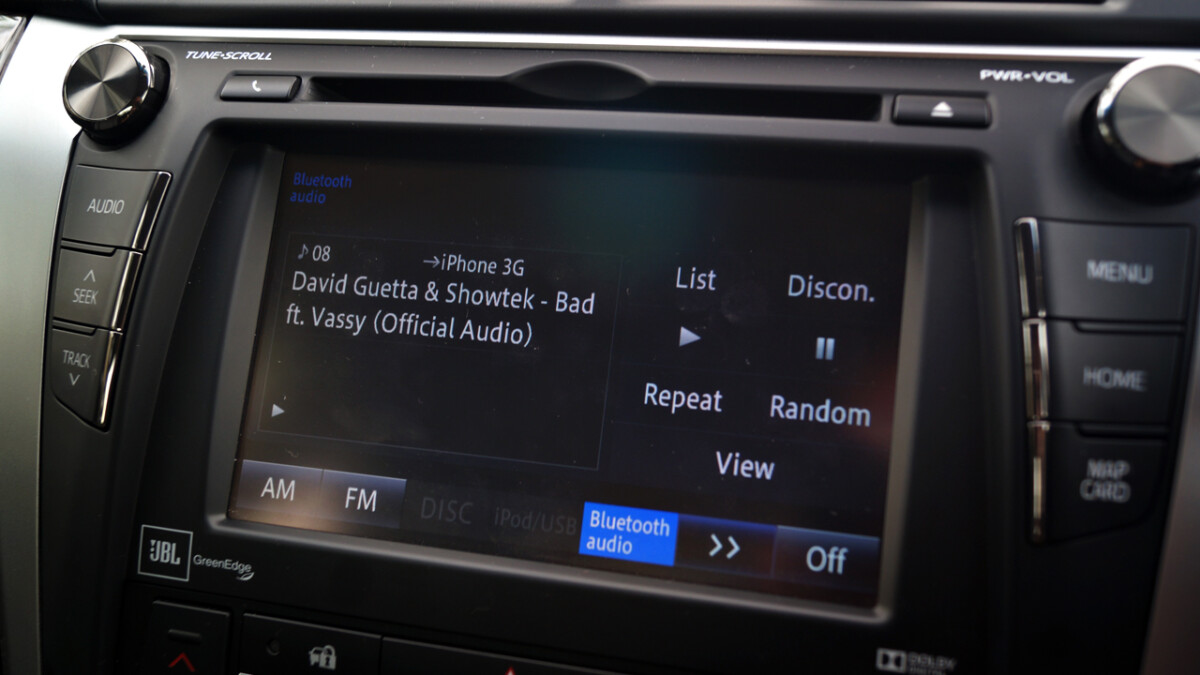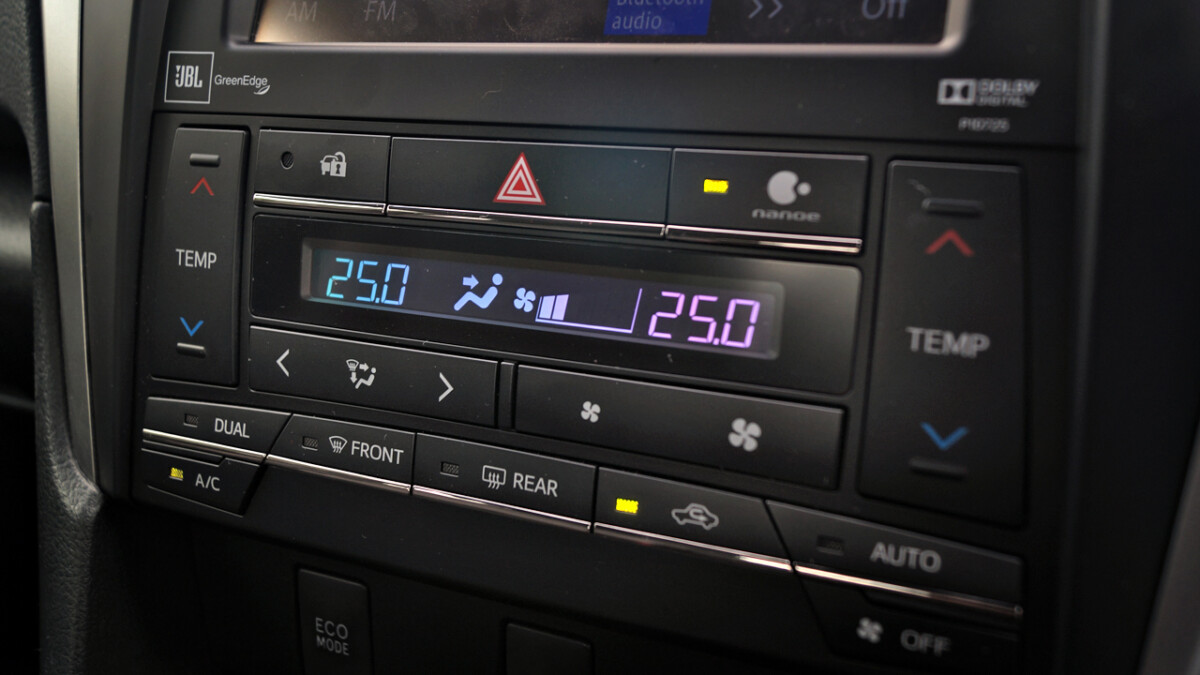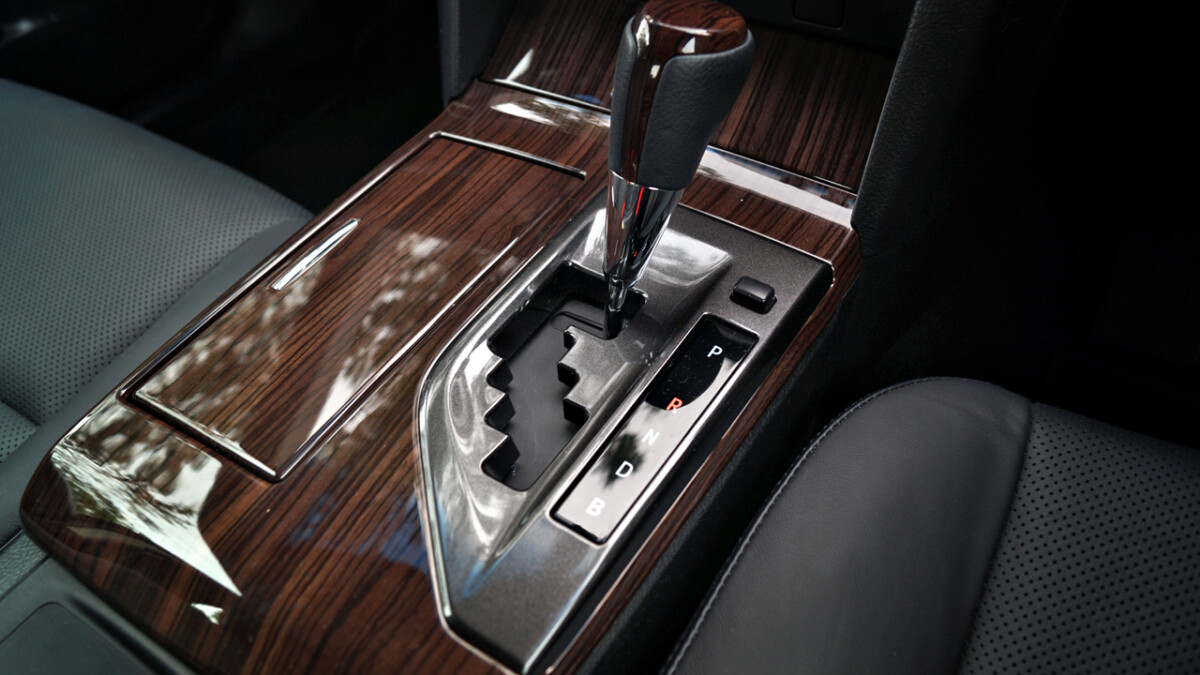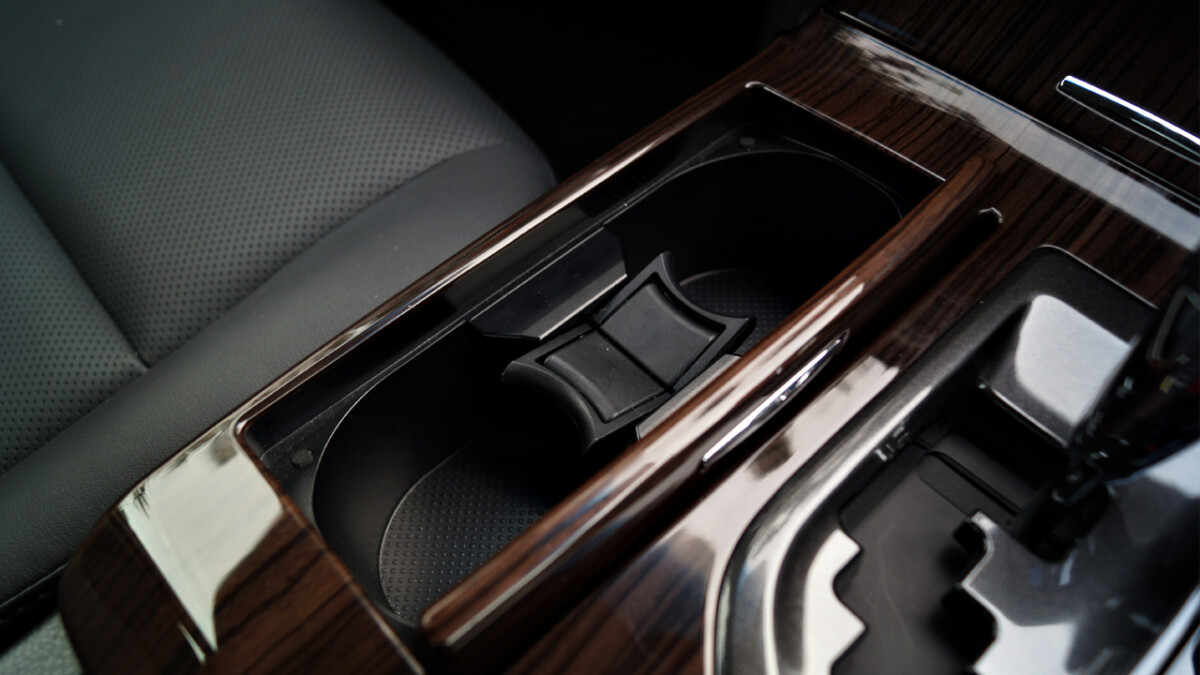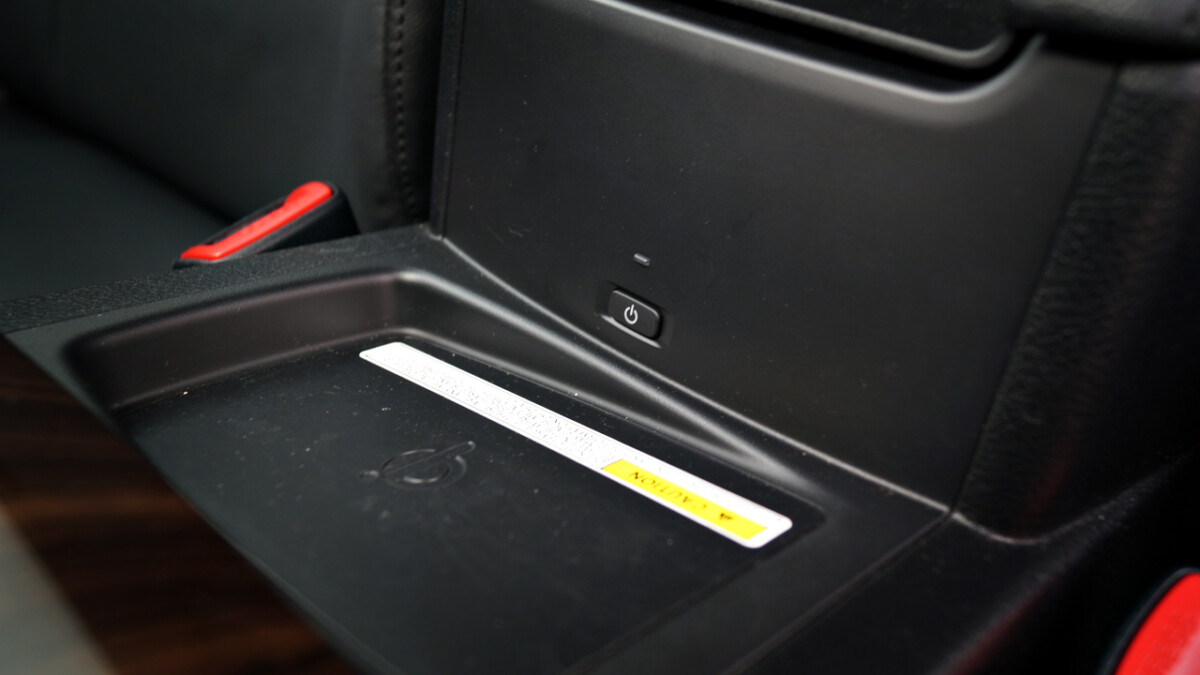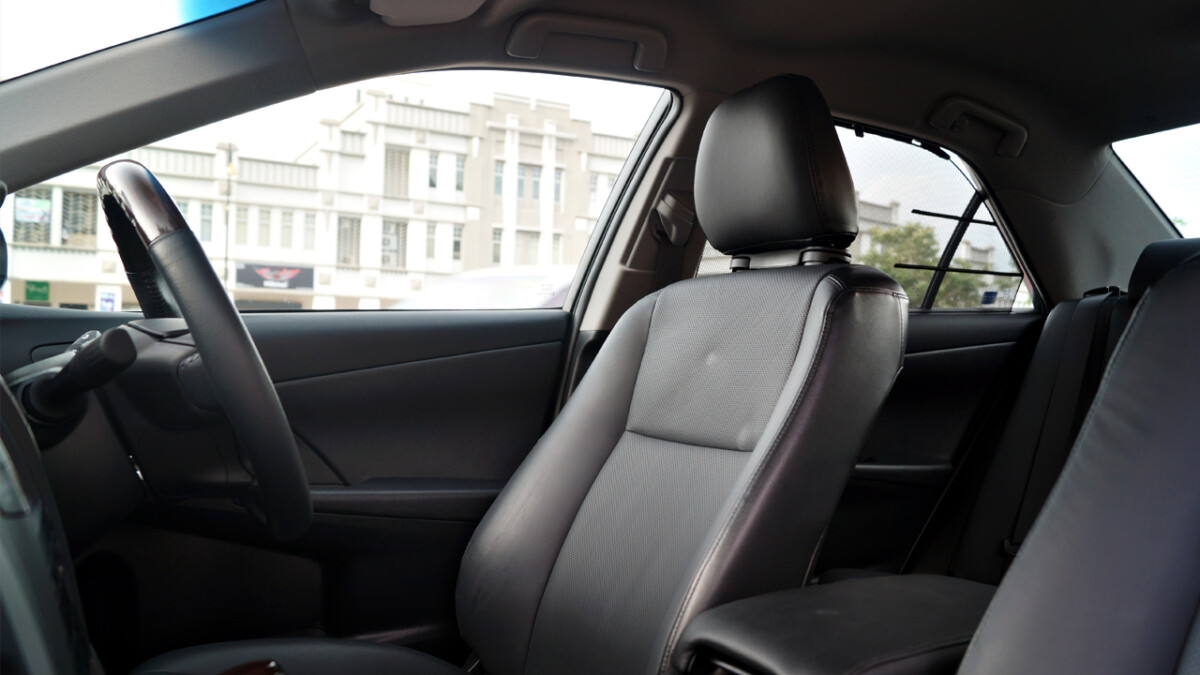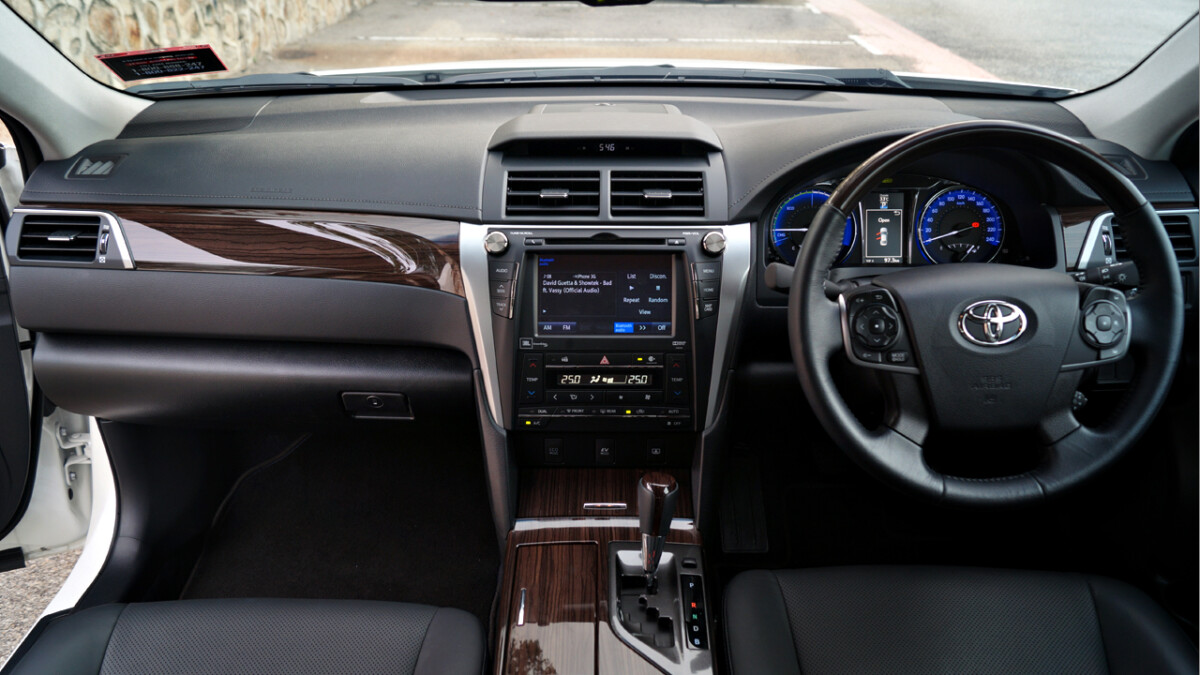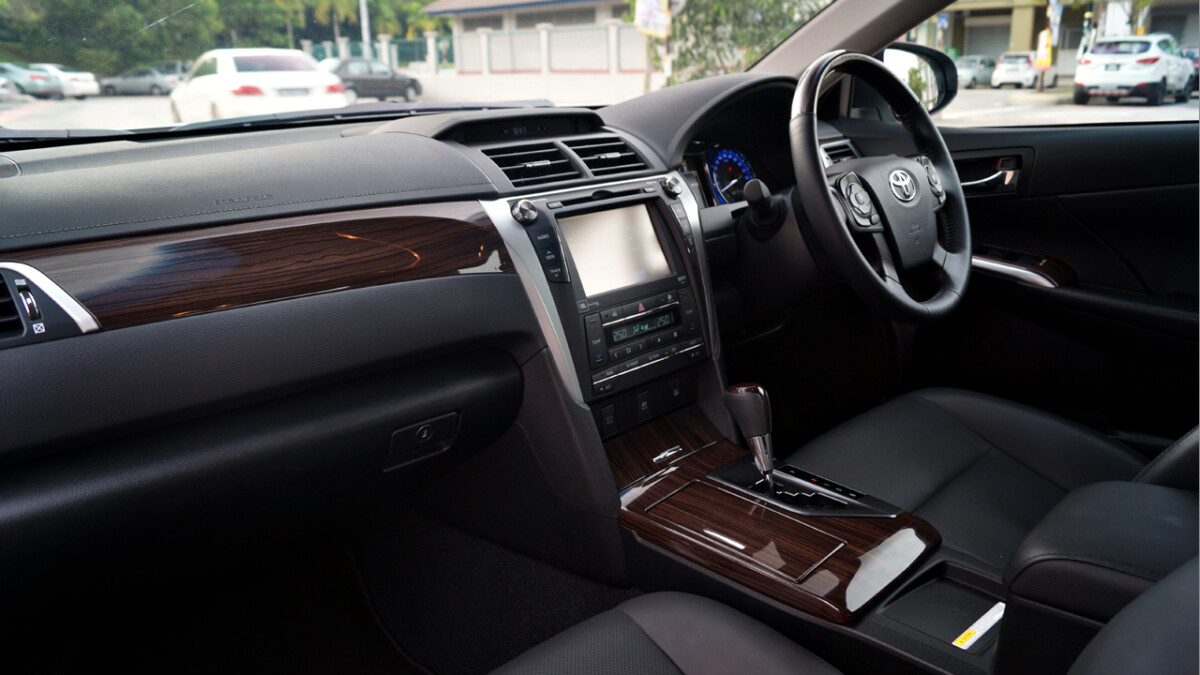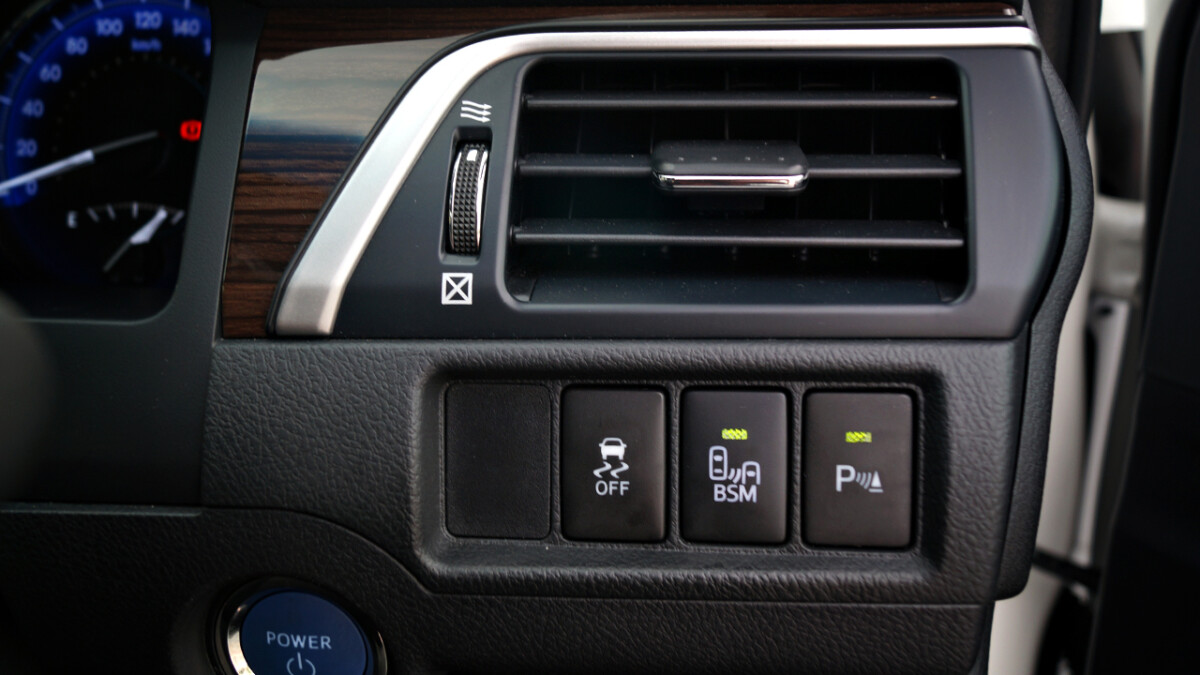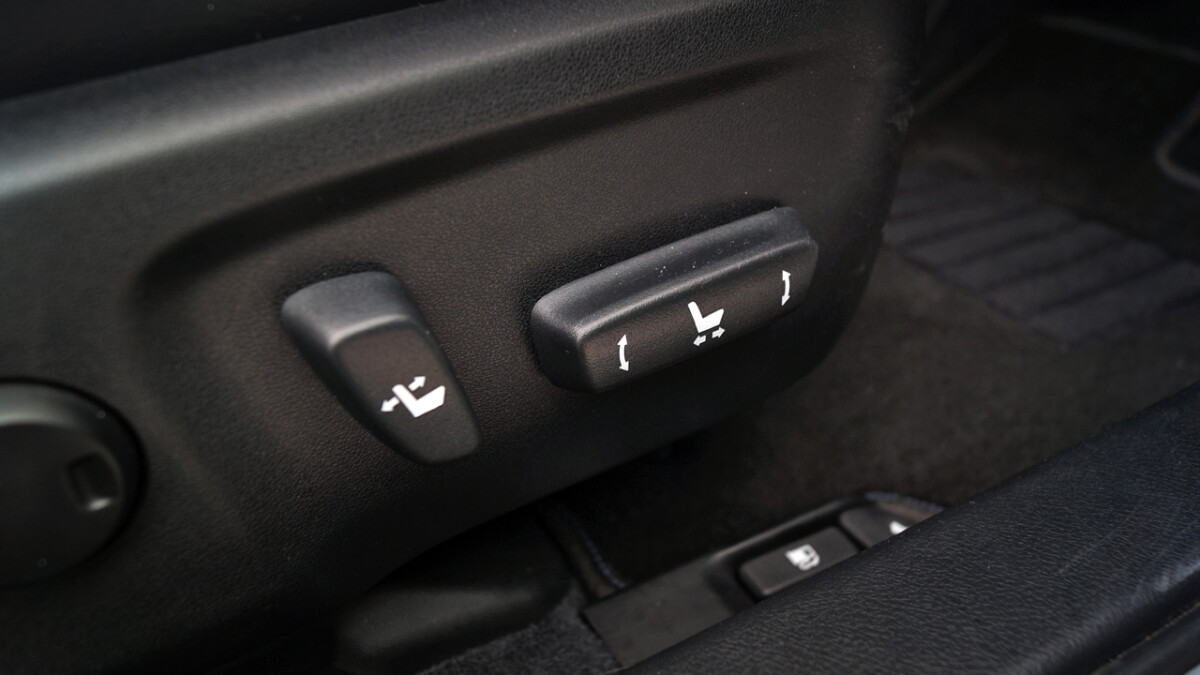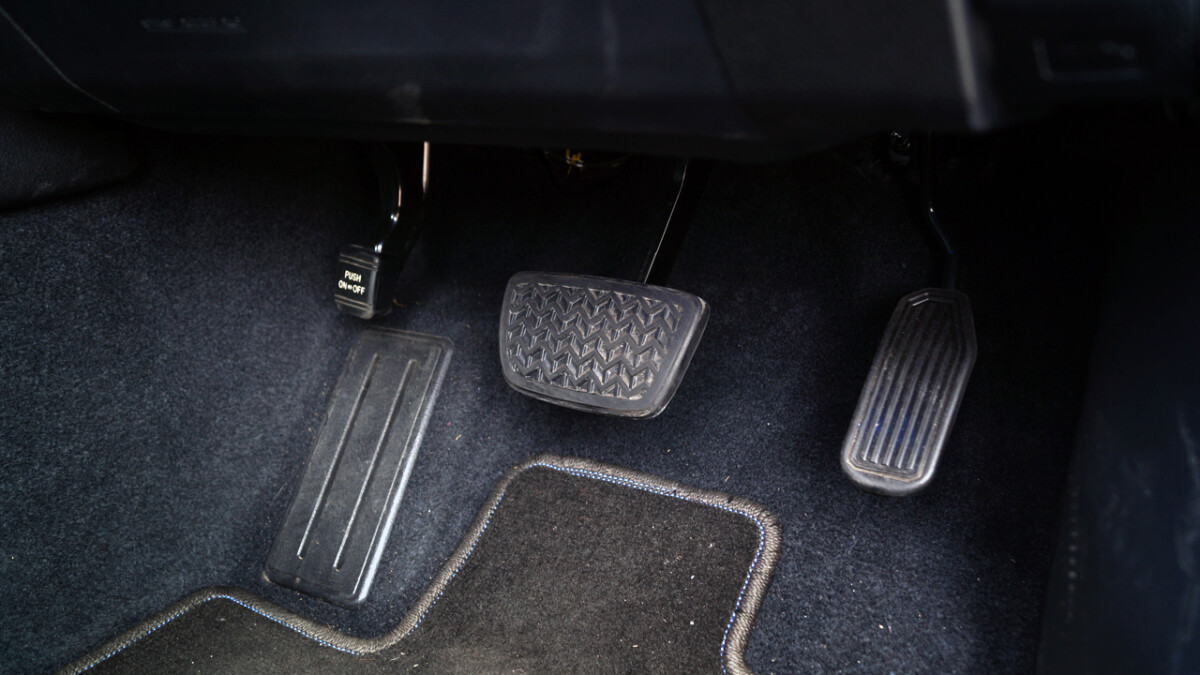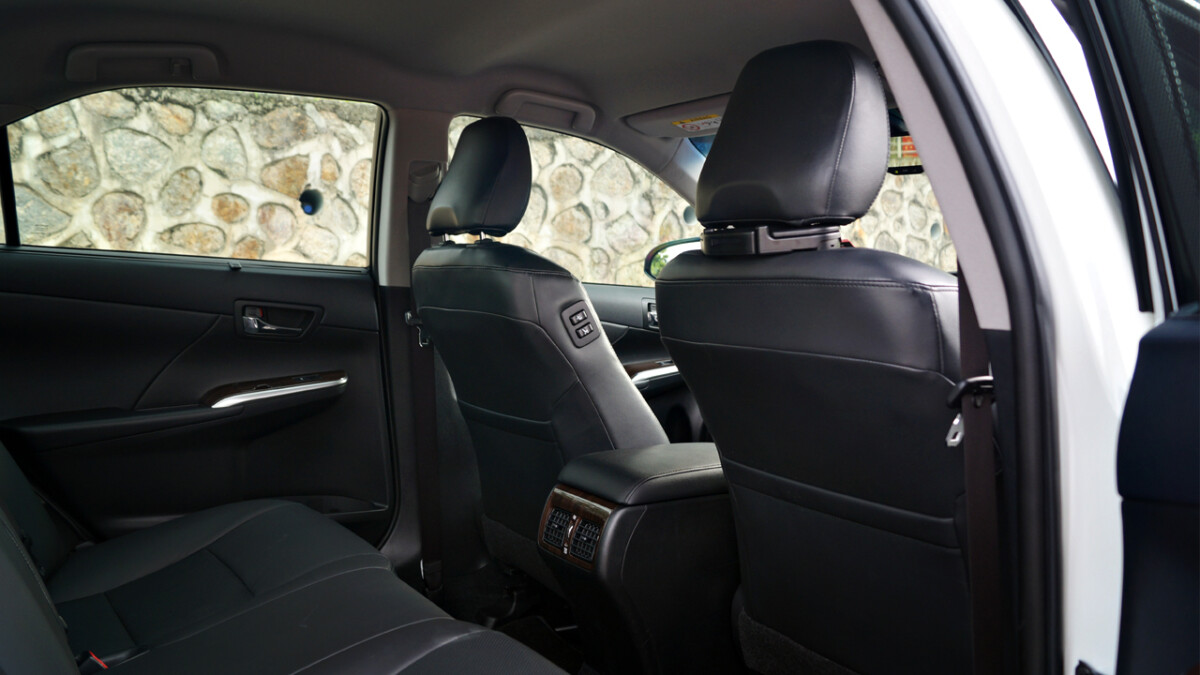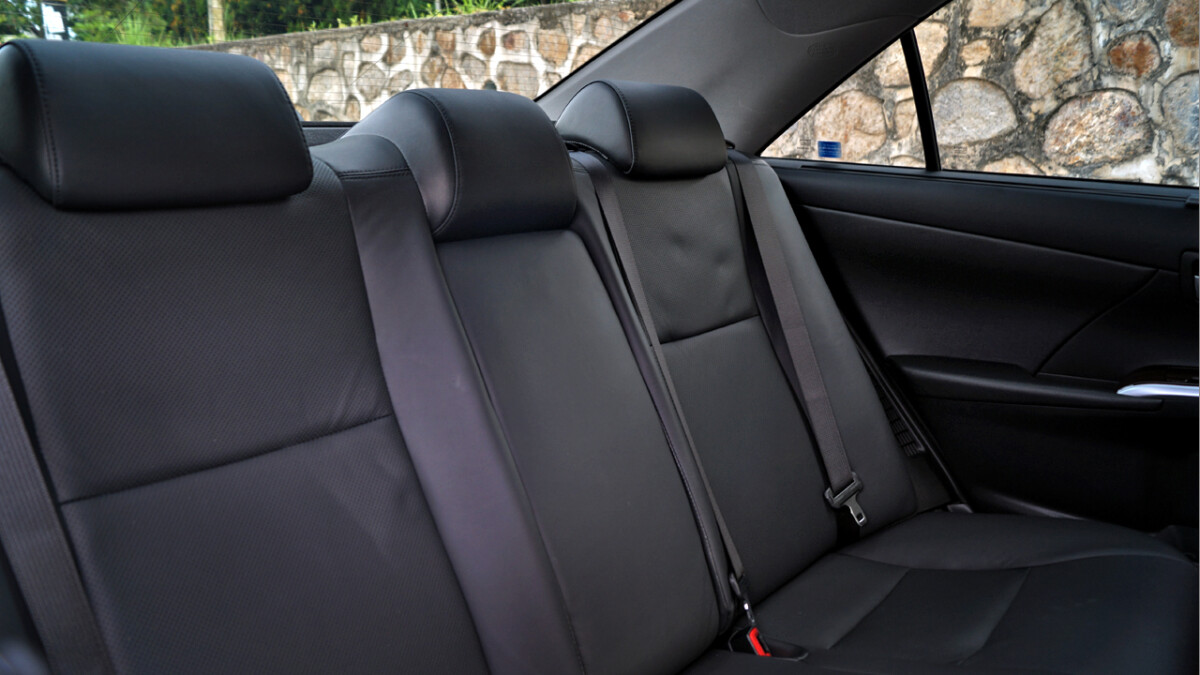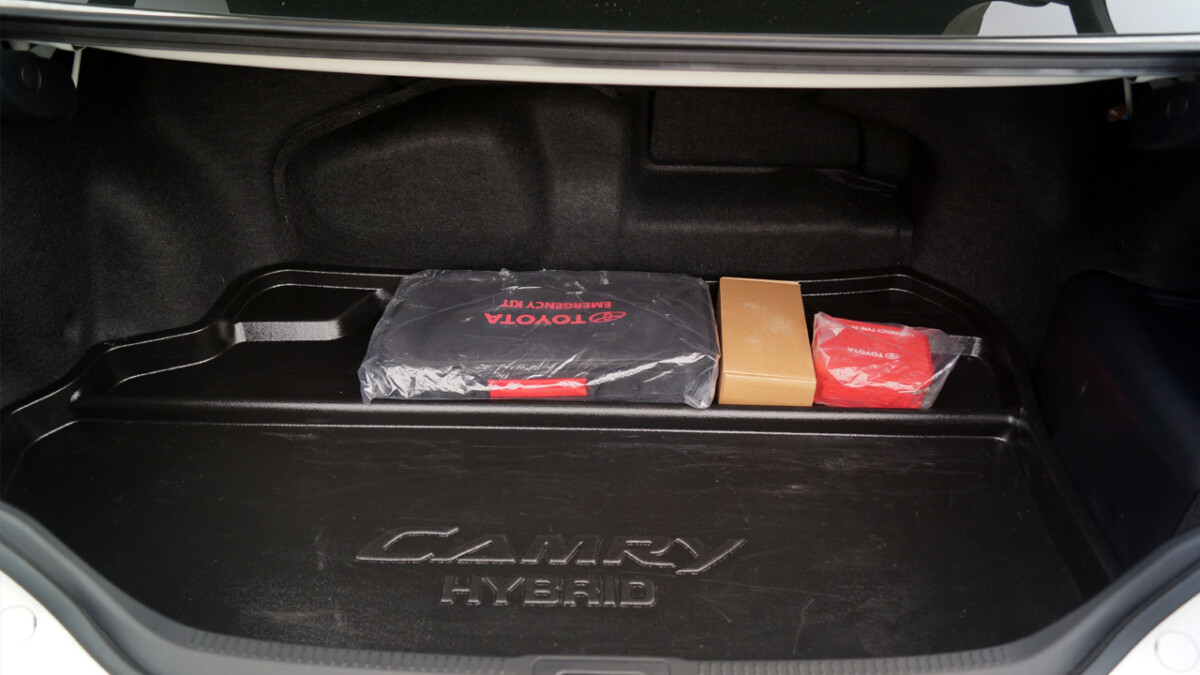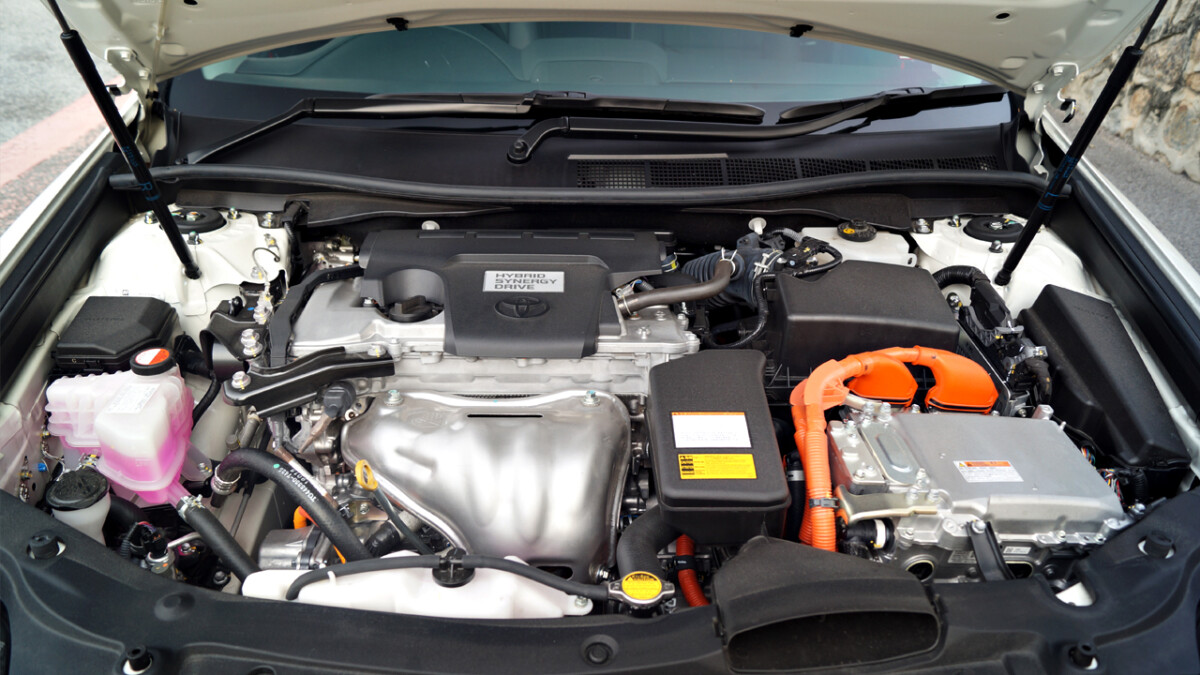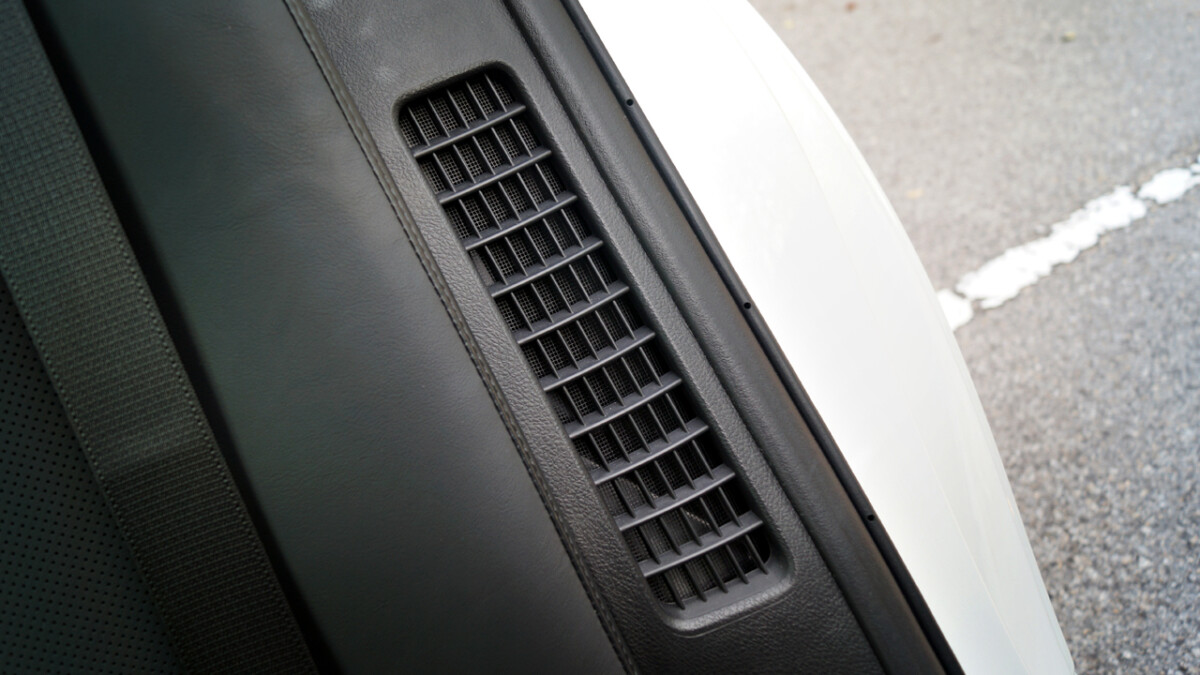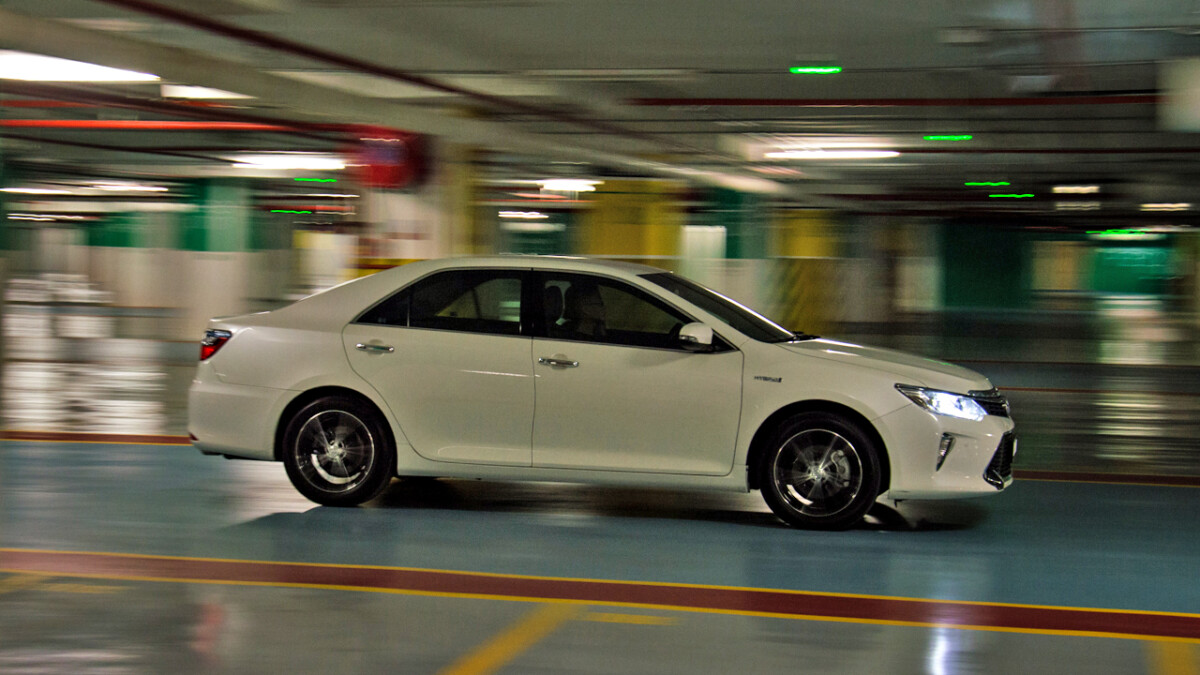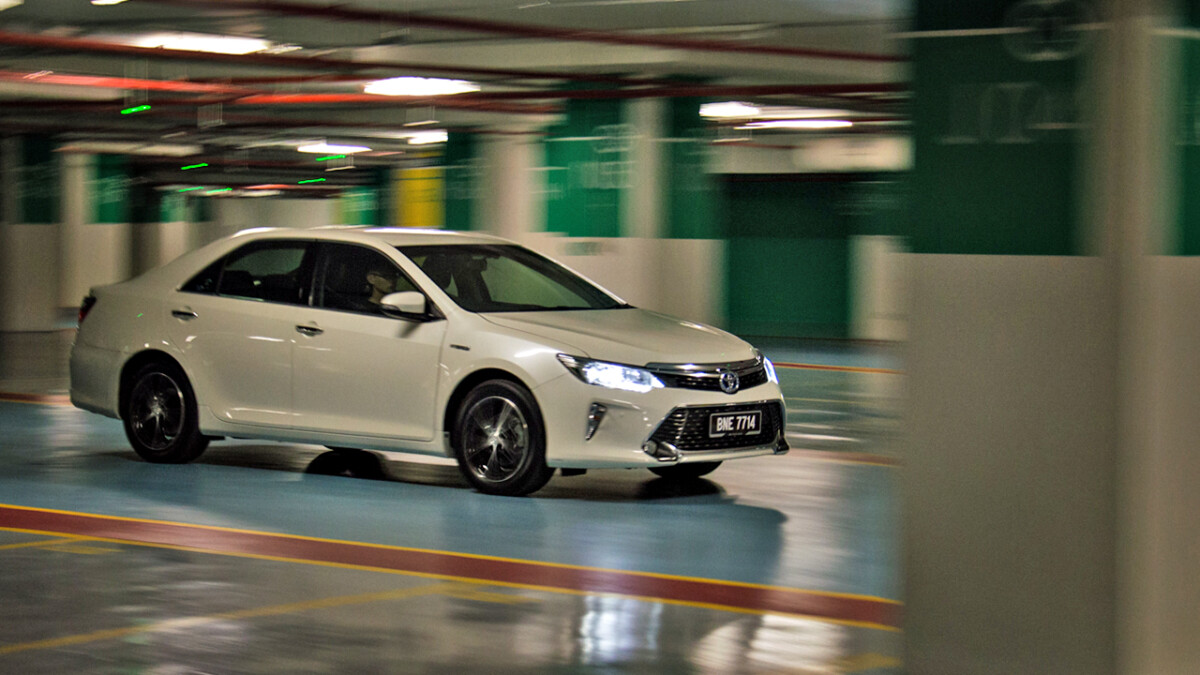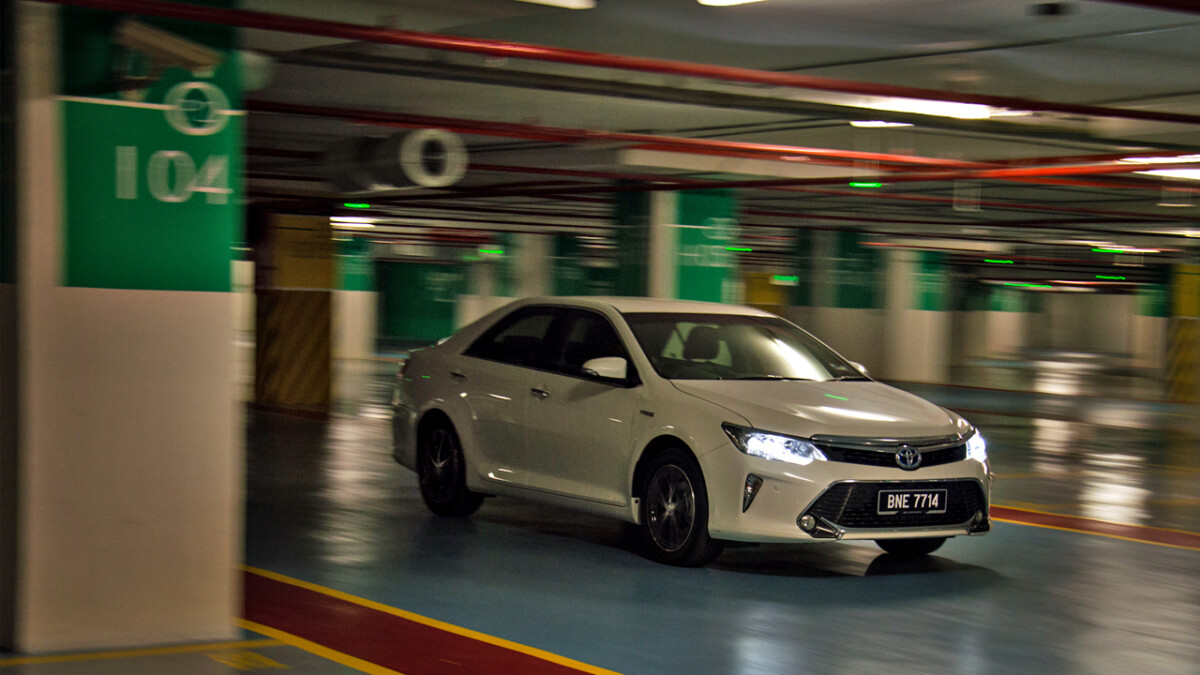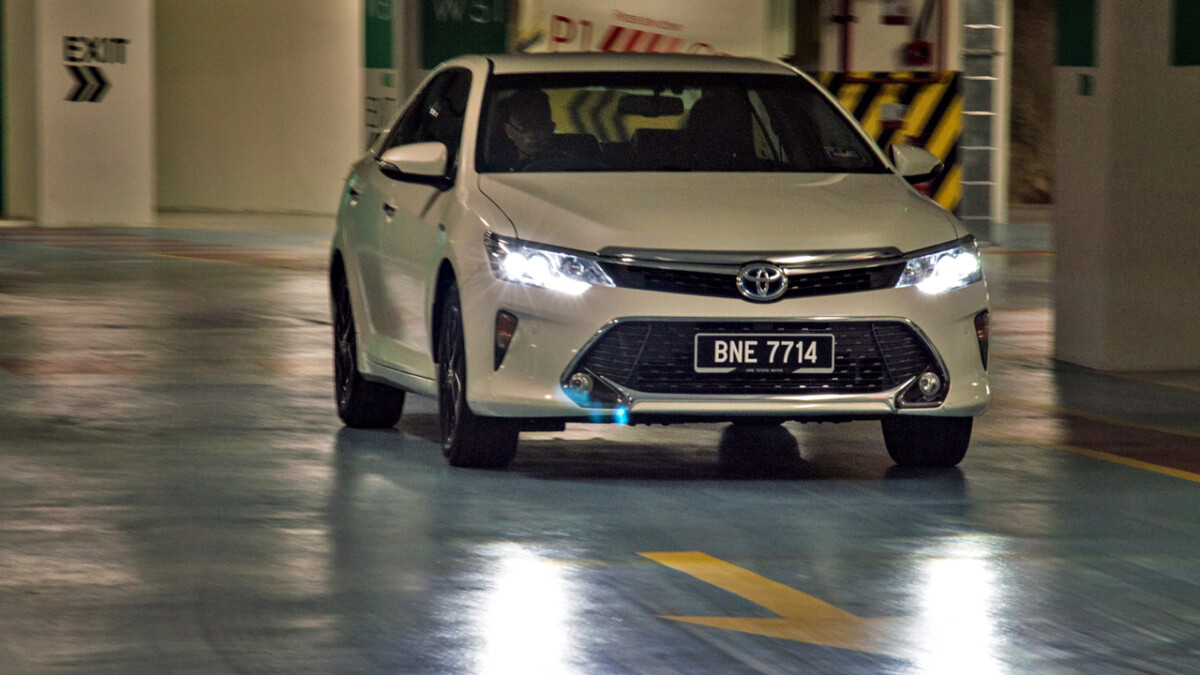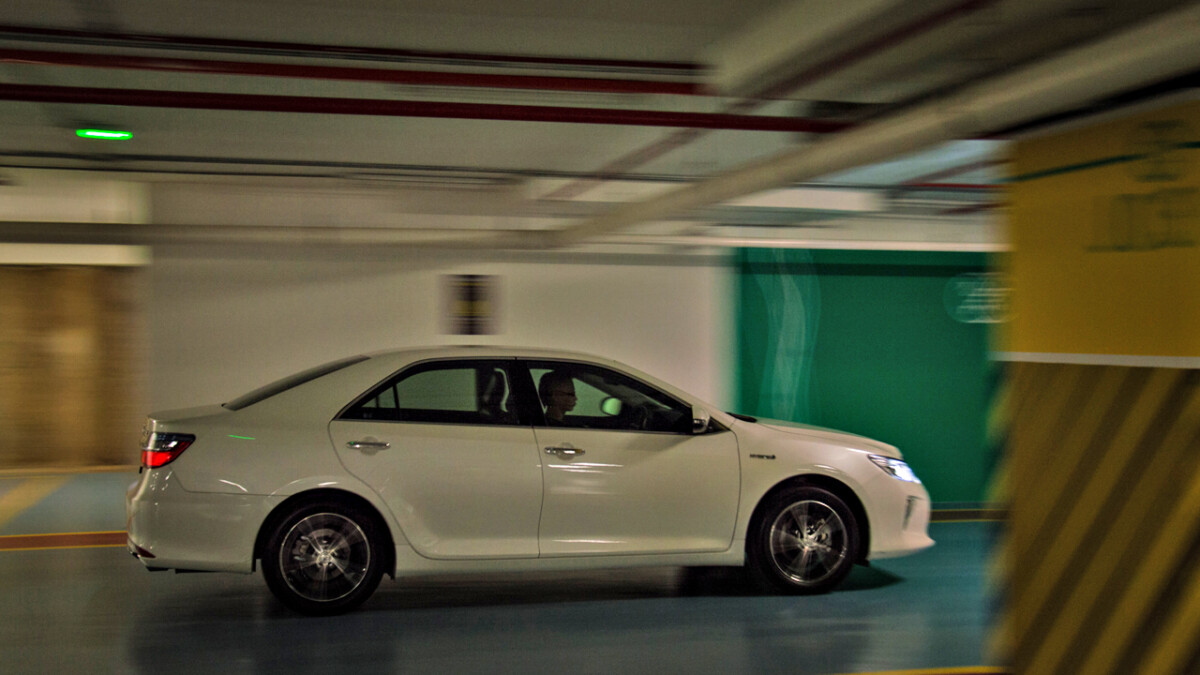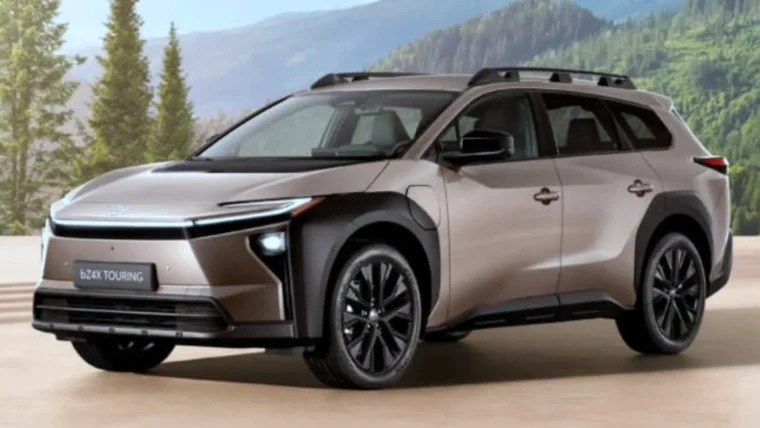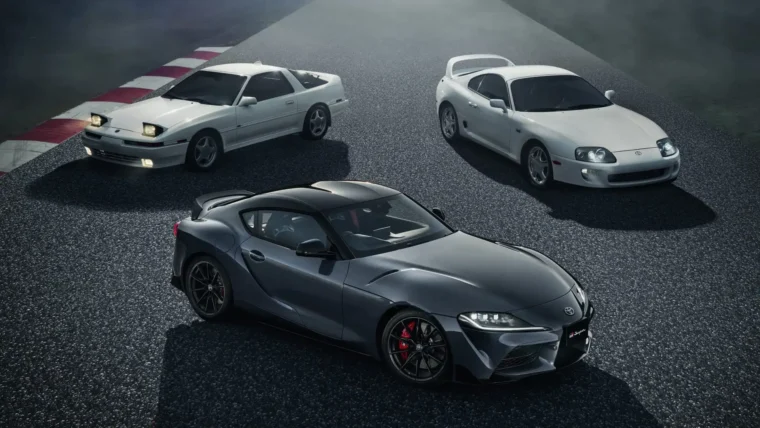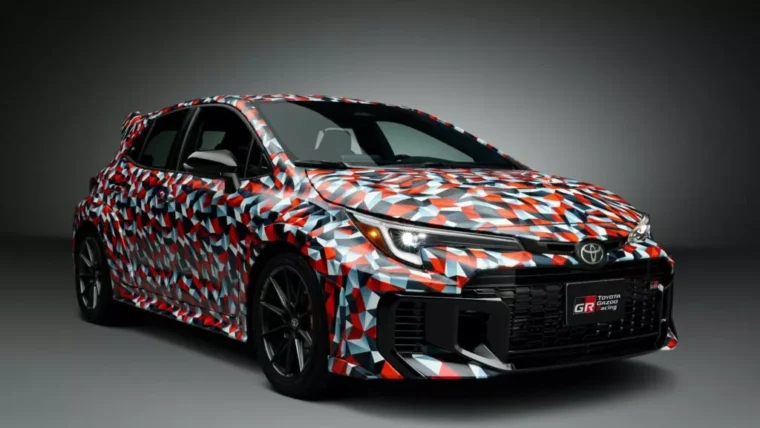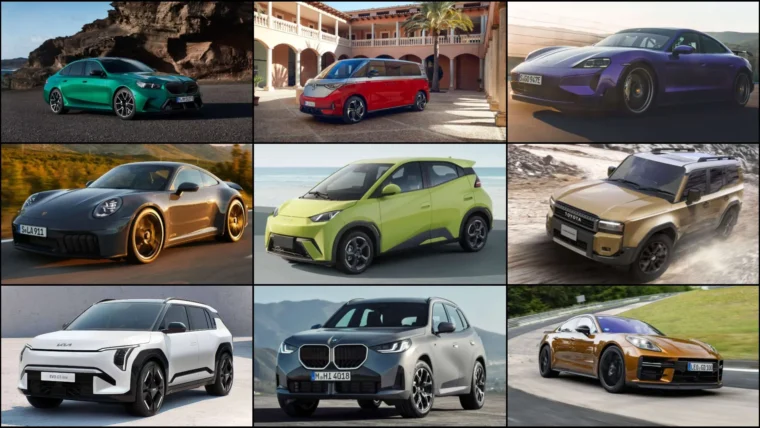While the Toyota Prius (and its variants) may be Toyota’s best selling hybrid model in their lineup, other models, like the Toyota Camry Hybrid also deserve your attention. Or does it? We had a Toyota Camry 2.5 Hybrid for a few days, and here’s what we had to say about Toyota’s range-topping Camry here in Malaysia.
Before we get into the review, let’s take a closer look at the Toyota Camry Hybrid’s history. The Toyota Camry Hybrid variant debuted with the XV40 generation of the Camry, and was built solely at Toyota’s Tsutsumi plant, for the North American market. The current generation Toyota Camry Hybrid, in the XV50 generation we reviewed here, made its global debut in 2011, before making a local debut in April 2015.
The Toyota Camry 2.5 Hybrid we have here replaces the range-topping 2.5V, and is the first hybrid Camry variant offered here in Malaysia. Powering the range-topper is a 2.5-litre 2AR-FXE inline-four engine which produces 158 horsepower at 5,700 rpm and 213 Nm of torque at 4,500 rpm, while the electric motors are able to muster 103 horsepower and 270 Nm of torque. Net system output is 202 horsepower, which goes to the front wheels via an electronically-controlled CVT.
Thanks to Toyota’s Hybrid Synergy Drive system, the Camry Hybrid is able to run on EV Mode for up to 2.57 kilometers, depending on battery charge. UMW Toyota is providing their owners of the Camry Hybrid with a 8-year warranty for the battery, while the rest of the car is covered with a 3-year / 100,000 km warranty.
Inside, the Toyota Camry Hybrid is identical to the regular petrol variant, with the same dark brown wood trim adorning much of the dashboard. Soft touch materials are also used generously when the Camry Hybrid was manufactured. The RPM counter from the petrol Camry variants has been replaced with an Eco meter. Those with a compatible mobile phone (sorry iPhone), can take full advantage of the built-in Qi wireless charger. Even if your phone does not feature Qi wireless charging, you still can place your phone in the charging pad without it sliding around. Nice little touch.
Apart from that, the Camry Hybrid also benefits from an electro-chromic rear view mirror, 7-inch DVD-AVN infotainment system with navigation, Bluetooth, USB, iPod connectivity and MirrorLink, powered back and rear window sun shades, nanoe™ ionizer, full seven airbags, including side airbags, curtain airbags and driver’s knee airbag and the blind spot monitor. The rest of the creature comforts in the Camry Hybrid are similar to the regular petrol variant of the Camry, which we reviewed here.
Outside, the Toyota Camry Hybrid features a rather intricately-designed front grille, which we believe aids in aerodynamics. There are even aero-stabilising fins on the wing mirrors and rear combination lamps which helps smoothen air flow around the car. Underneath, the Camry Hybrid has a protective cover that also reduces drag under the car. Being a range-topper, the Camry Hybrid rides on a set of unique-looking 17-inch alloy wheels, which to me, looks great. The rest of the Camry Hybrid remains similar to the other Camry variants.
Behind the wheel, those expecting the Camry Hybrid to be plain and boring will be left disappointed, as it’s anything but. With a pair of electric motors hiding in the engine bay (one acts as a starter for the petrol engine plus recharges the hybrid battery, while the other also recharges the hybrid battery, but can drive the front wheels independently), torque is never an issue, with the full 270 Nm from the electric motors available from a standstill. Gently squeezing the throttle, and away you go. Acceleration is brisk, and very quiet. Toyota claims that the Camry Hybrid can deliver 5.2 litres/100 km thanks to the EV mode, and after testing it out, we do not doubt the figures.
Thanks to the CVT, gearshifts (or the lack of) are seamless and smooth, which provides the car with excellent smooth acceleration. Engine noise is well suppressed from the cabin, as well as road and tyre noises. Thanks to the hybrid set up, starting up the car was a surreal experience. To start the car, just hold the brake pedal down, and push the start button. After that, slot the gear into D, and away you go. No noise at all. At times, I had to double check that the car has in fact started, as everything was just so quiet. The petrol engine only kicked-in after a certain distance was covered.
But has the hybrid system in the Camry ruined its handling? Not at all, as we found out. While the Camry wasn’t particularly known for its handling prowess, the hybrid variant begs to differ. Of course, the Camry Hybrid won’t out-manoeuvre a more nimble car round the bends, but for what it’s worth, it does the job very well. Bodyroll is surprisingly kept in check, while grip was more than adequate from the Bridgestone Turanza ER33 rubbers. But that’s not the point. The Camry Hybrid is meant to be driven sedately, and it does that job superbly.
UMW Toyota certainly has a winner on their hand with the Toyota Camry Hybrid. Assembling the Camry Hybrid locally meant that its price could be kept competitive, while the hybrid system can be considered as an added bonus. For those seeking excellent fuel economy, safety and comfort, look no further. With the current tax incentives set to expire by the end of this year, the Camry Hybrid (at current time) packs excellent value for money. The same cannot be said once the tax incentives expire, as it was estimated that prices will definitely break the RM200,000 barrier.
Price: RM174,900.00 (OTR with insurance)
Engine: 2.5-litre inline-4 2AR-FXE with VVT-i & ACIS
Horsepower (petrol engine): 160 PS @ 5,700 rpm
Torque (petrol engine): 213 Nm @ 4,500 rpm
Horsepower (electric motor): 143 PS
Torque (electric motor): 270 Nm
Transmission: Electronically controlled continuously variable transmission (E-CVT)
Toyota Camry Hybrid exterior photo gallery
Toyota Camry Hybrid interior photo gallery
Toyota Camry Hybrid panning photo gallery (credit to my friend, Ken Ng)
Other posts by AF Newsdesk

